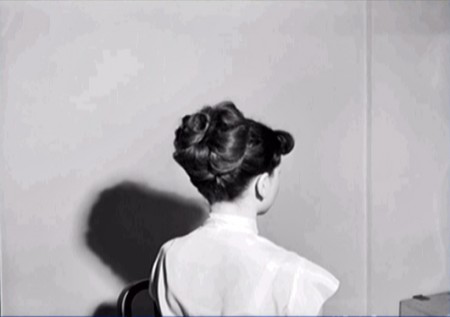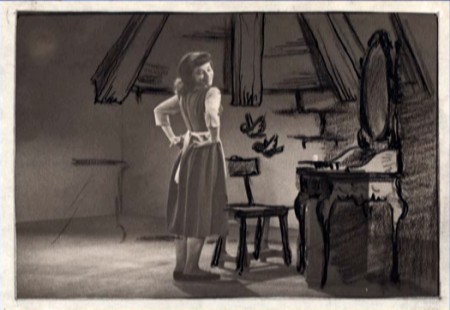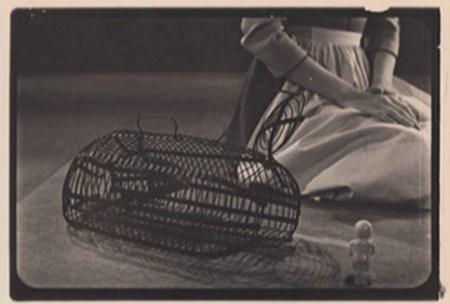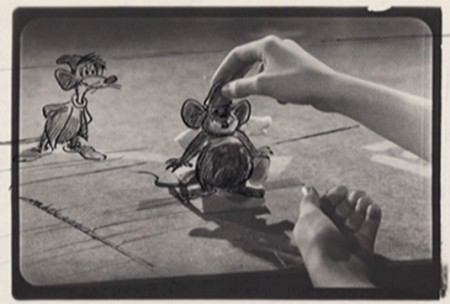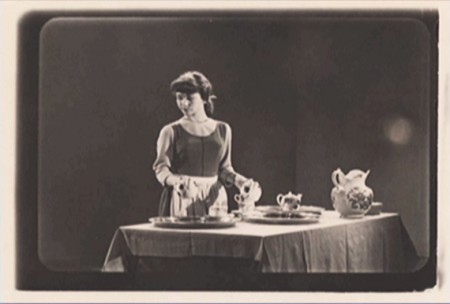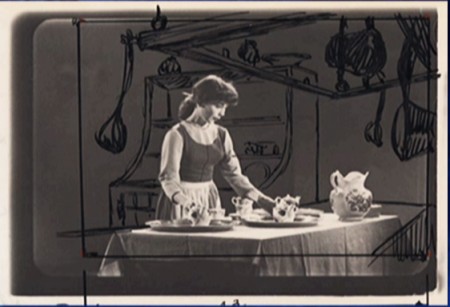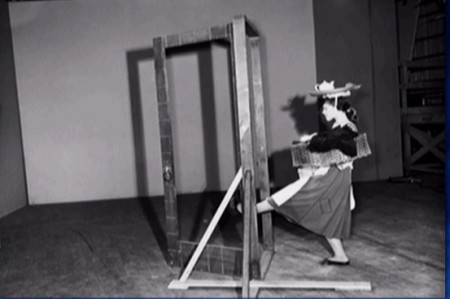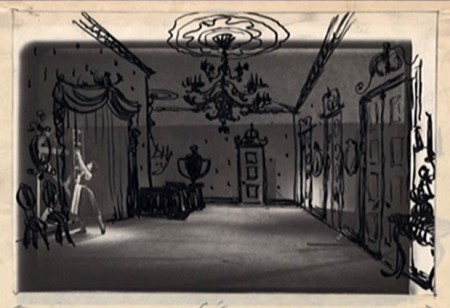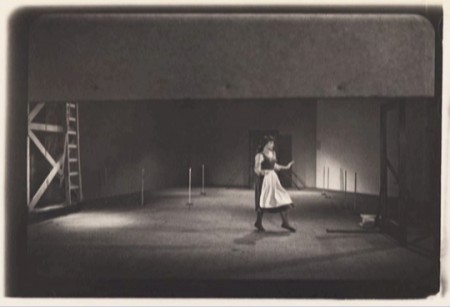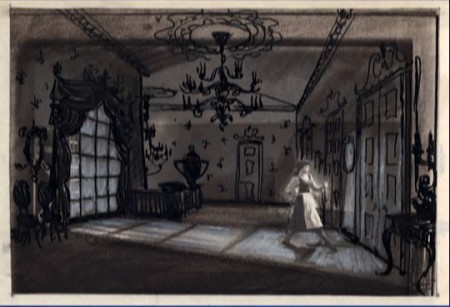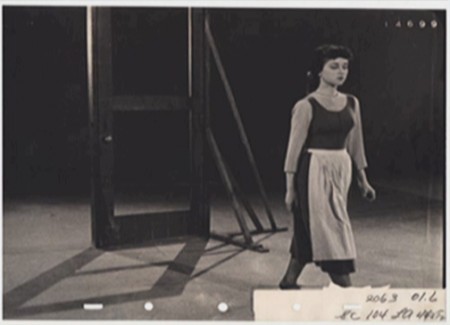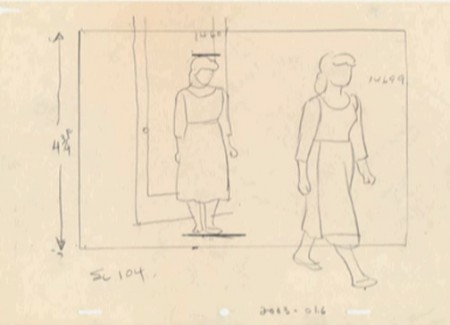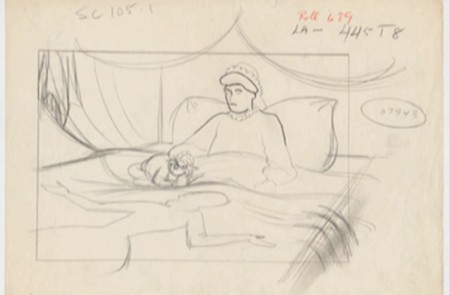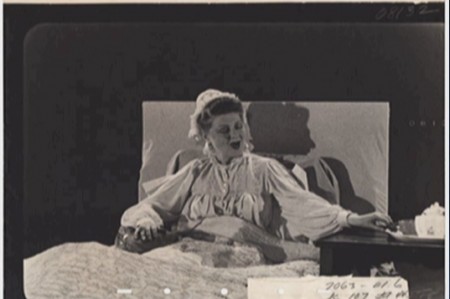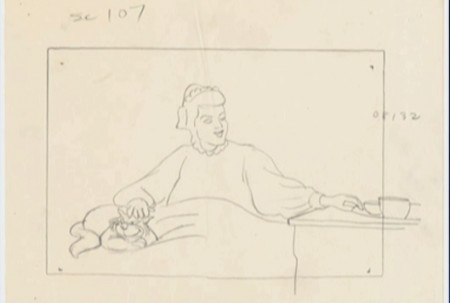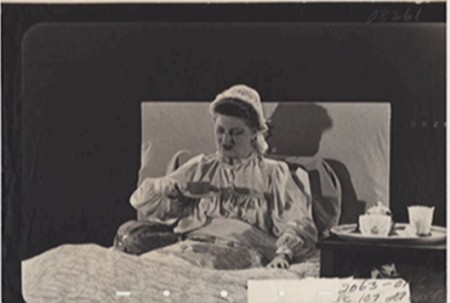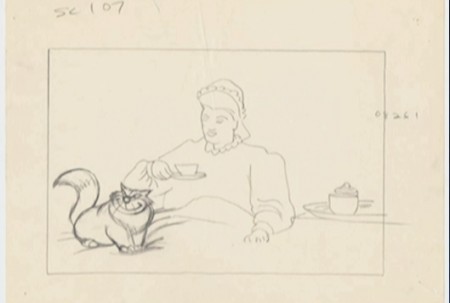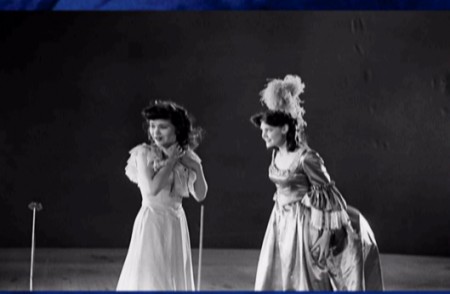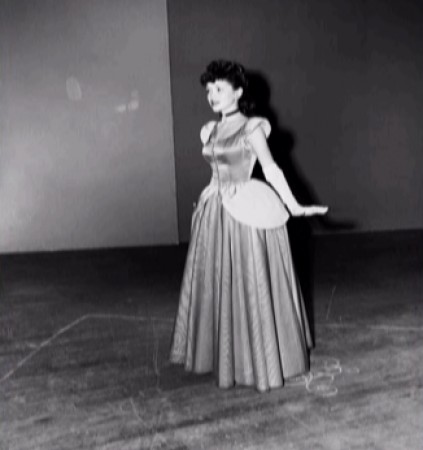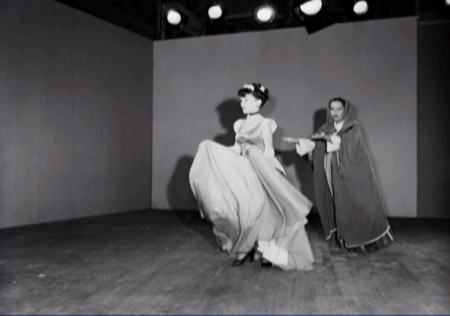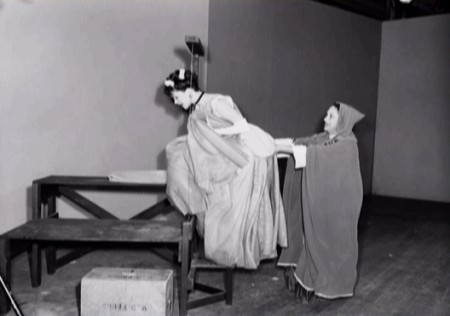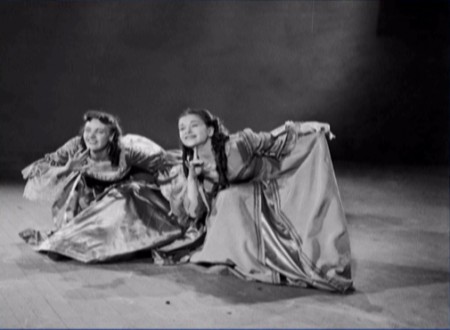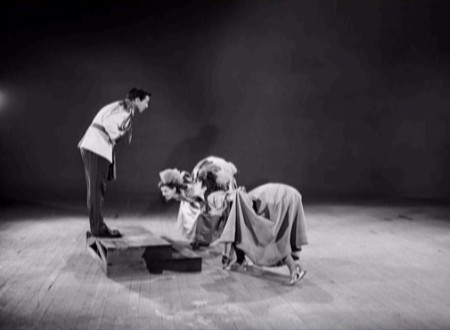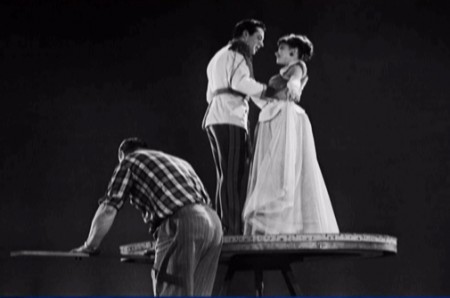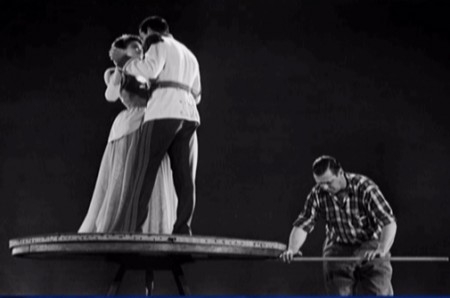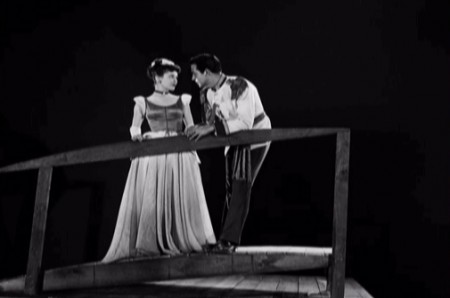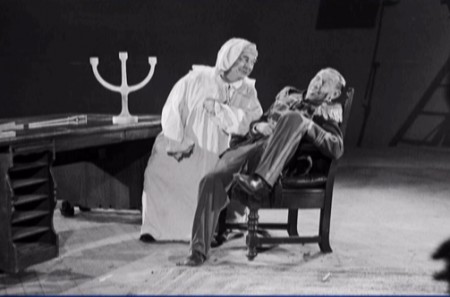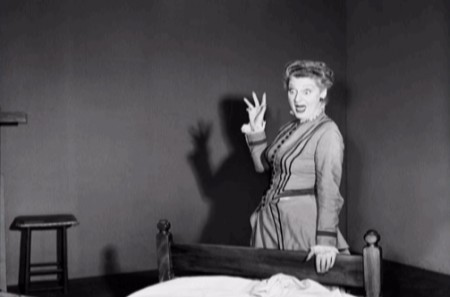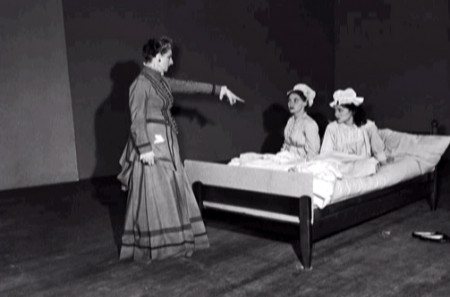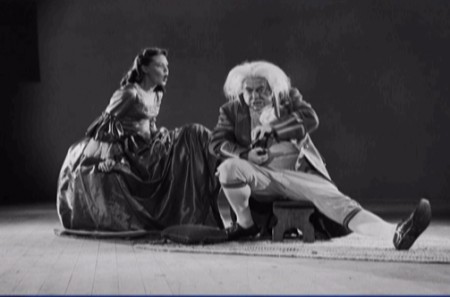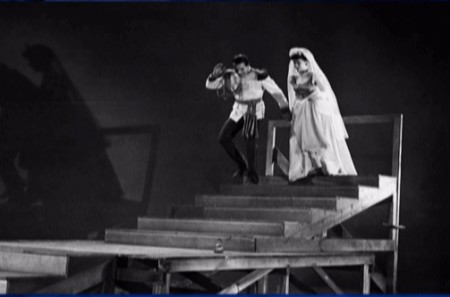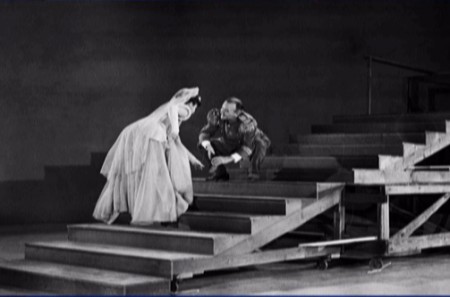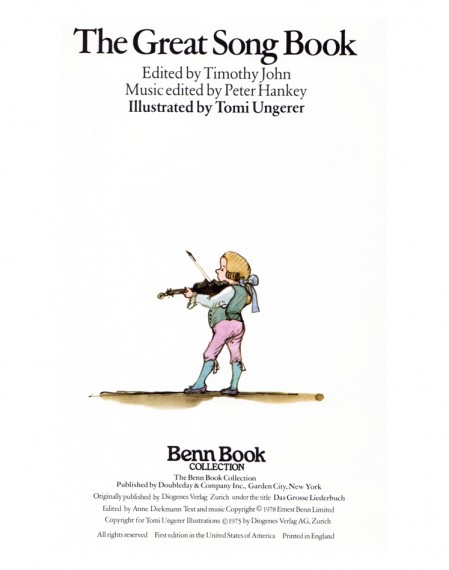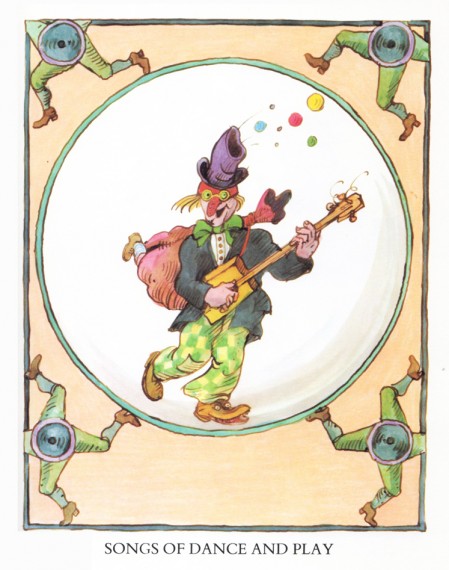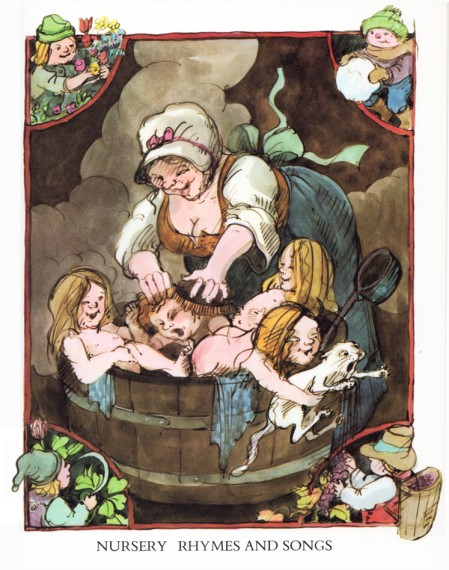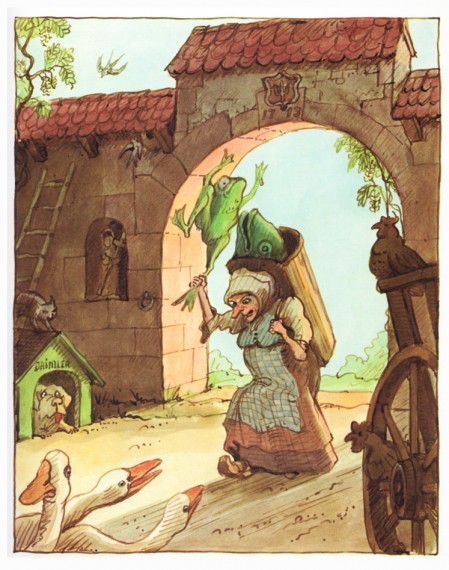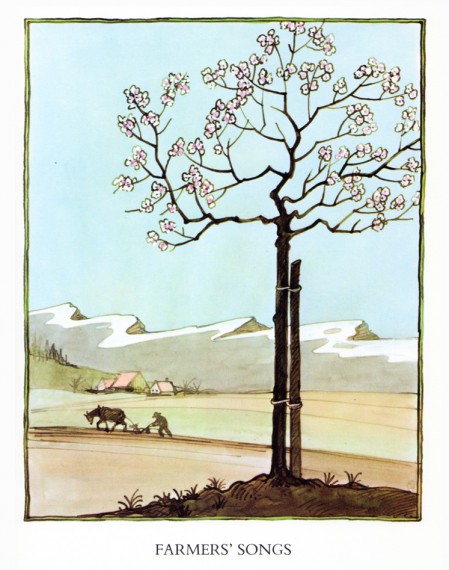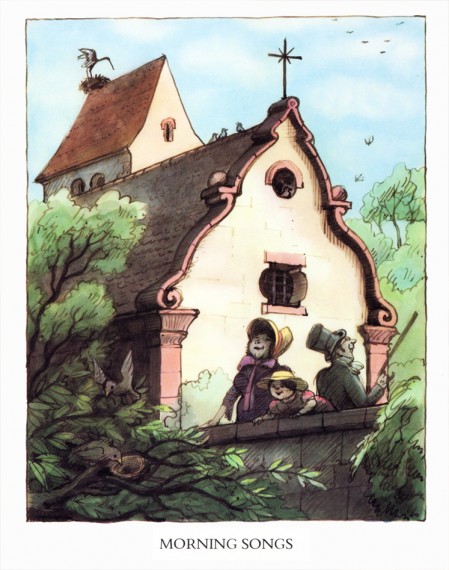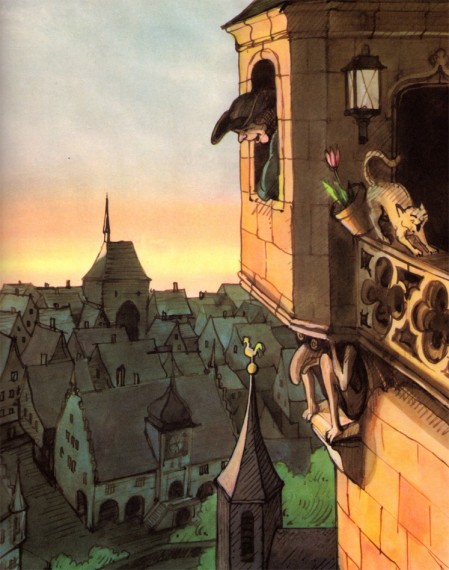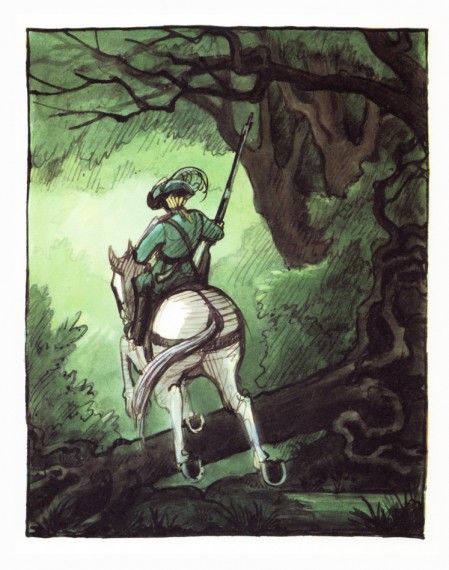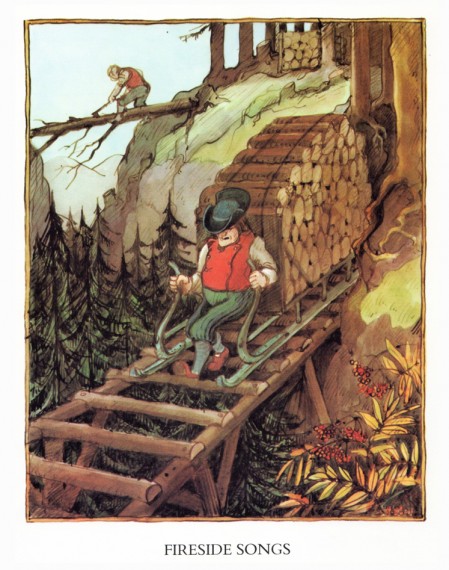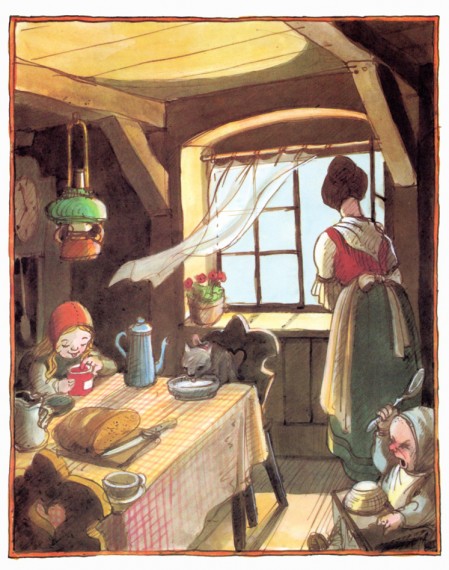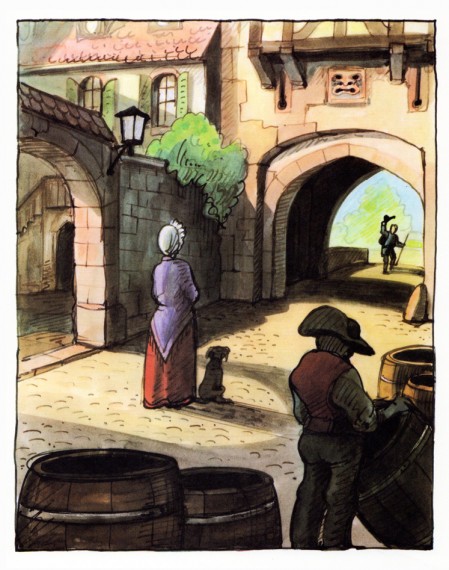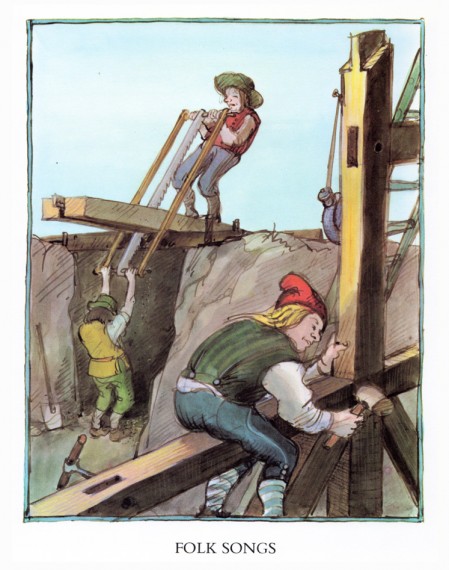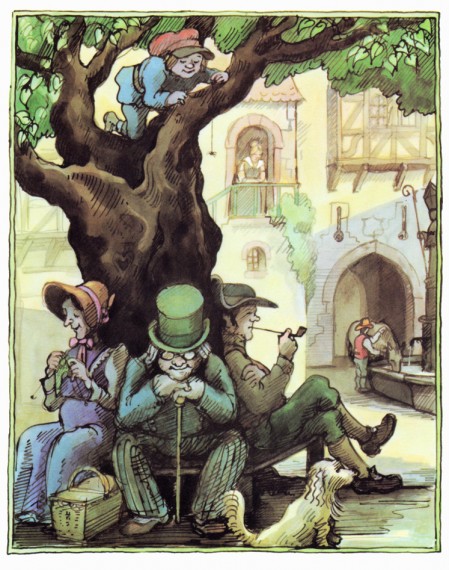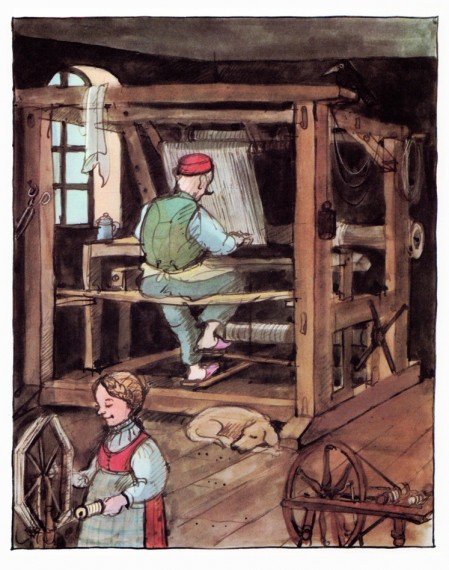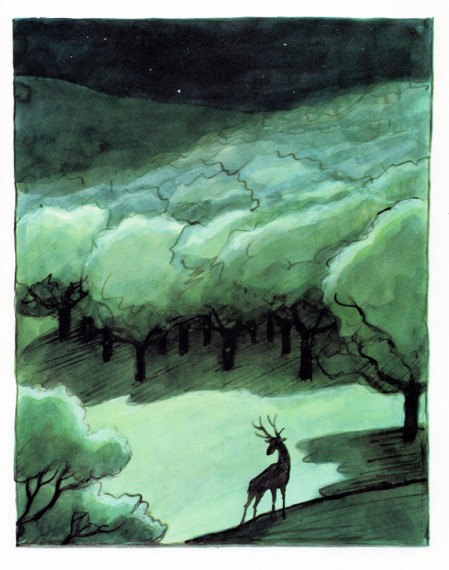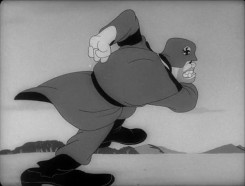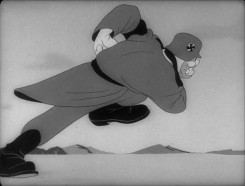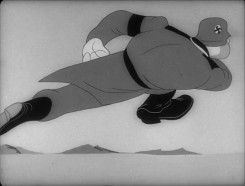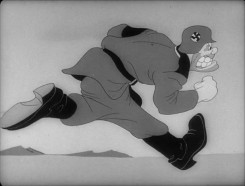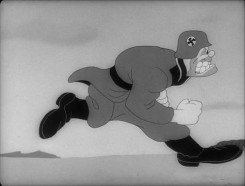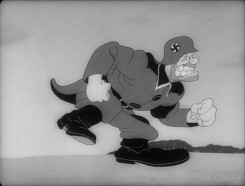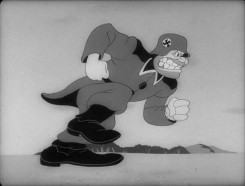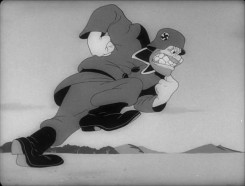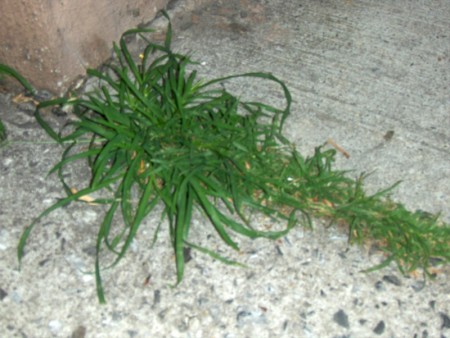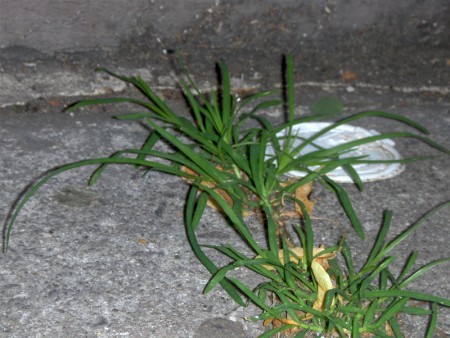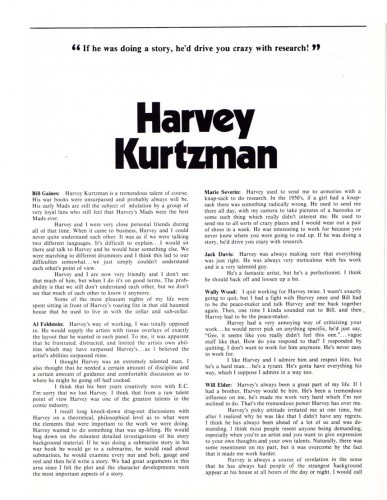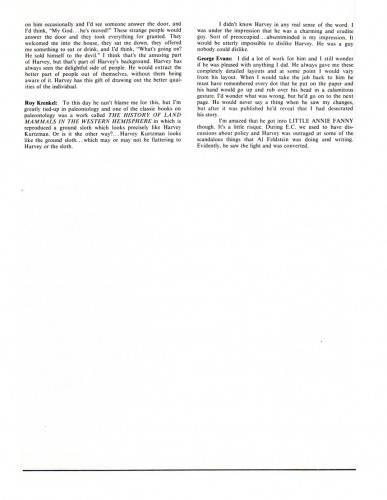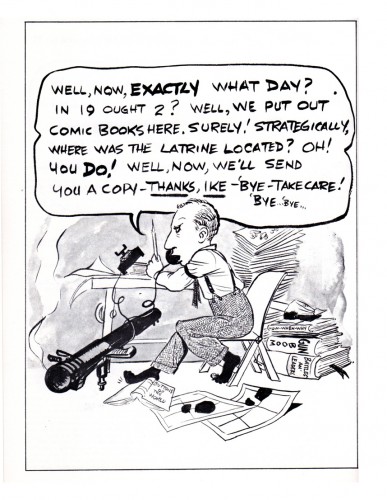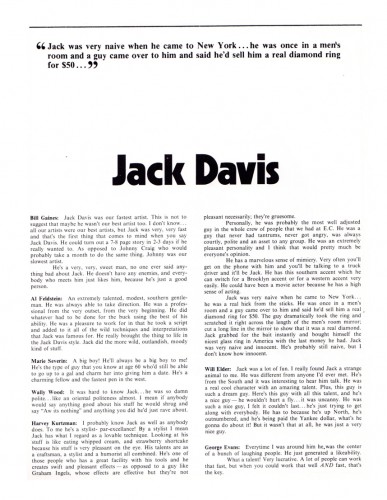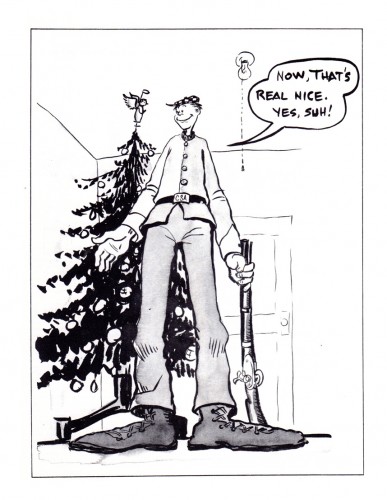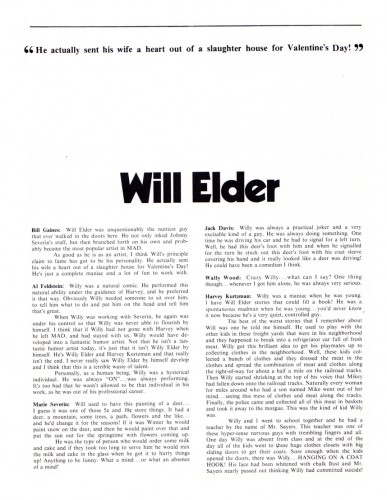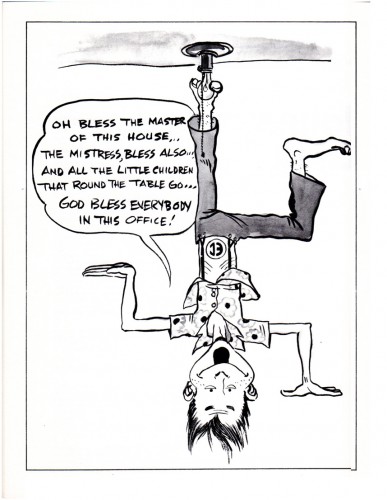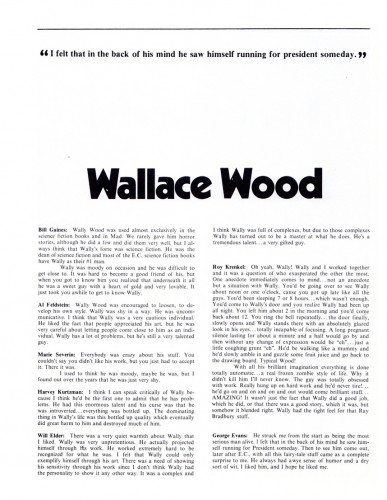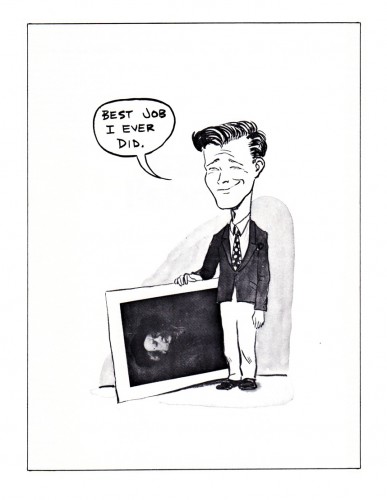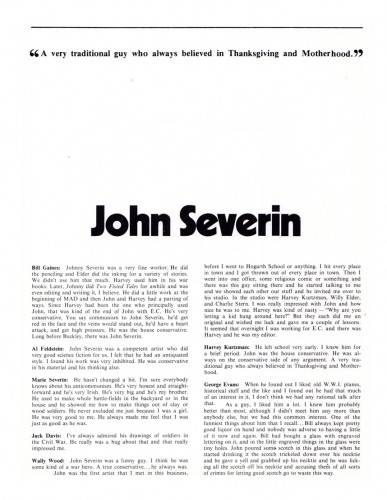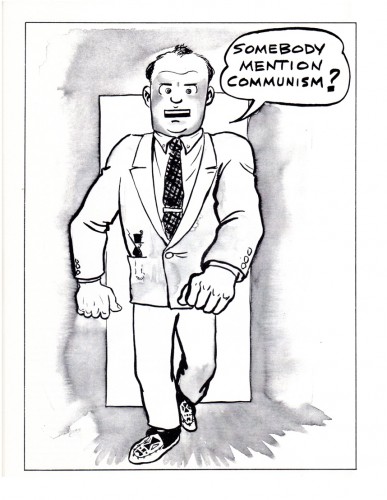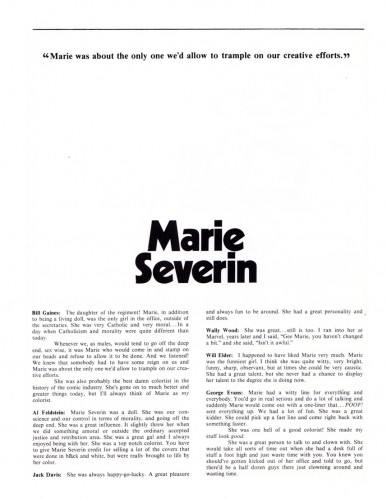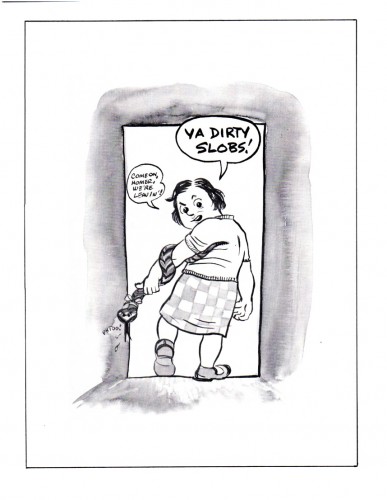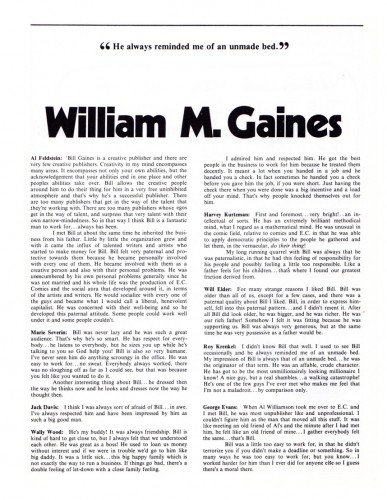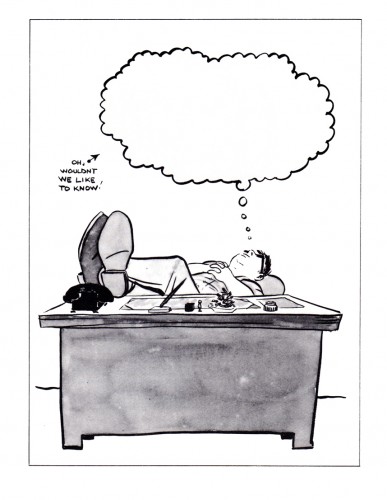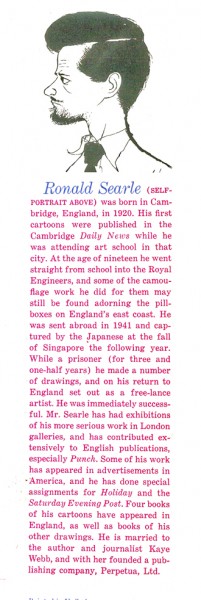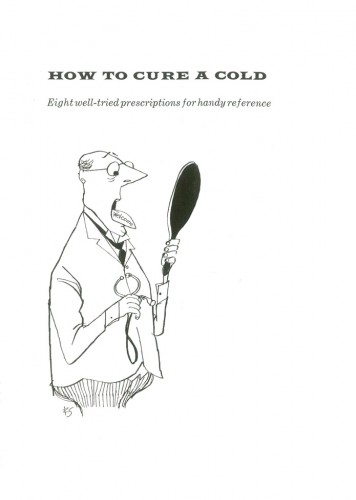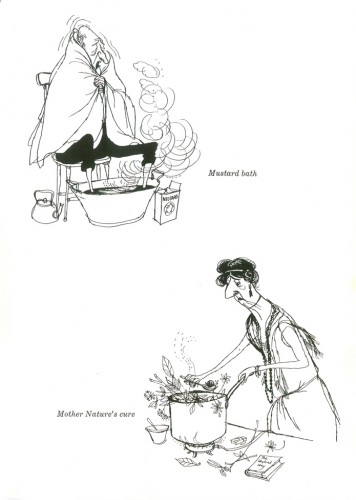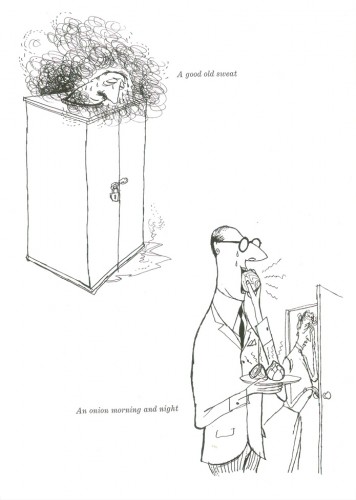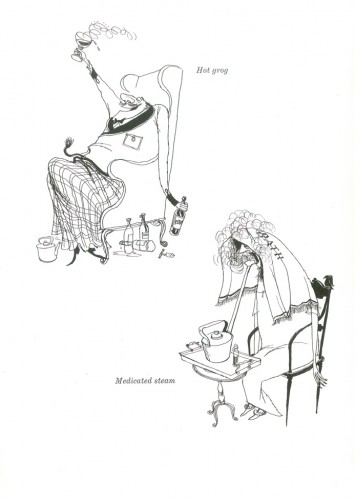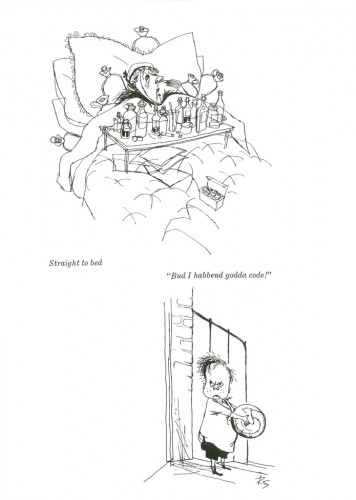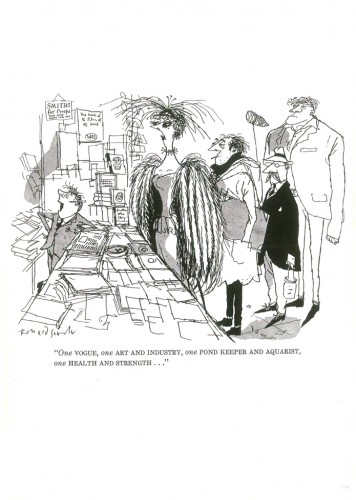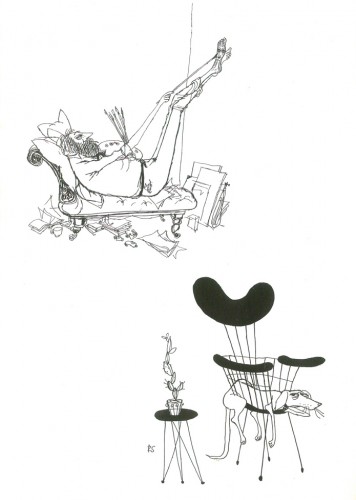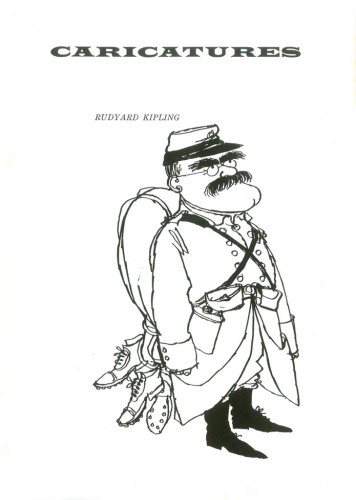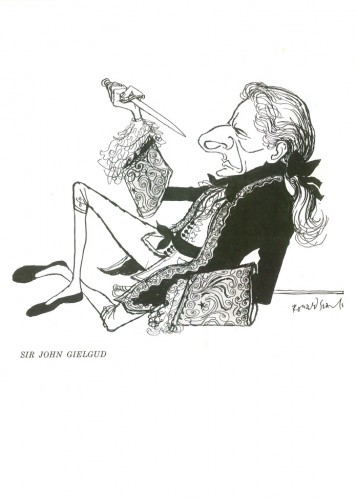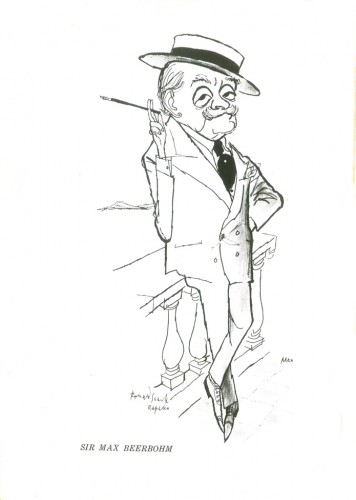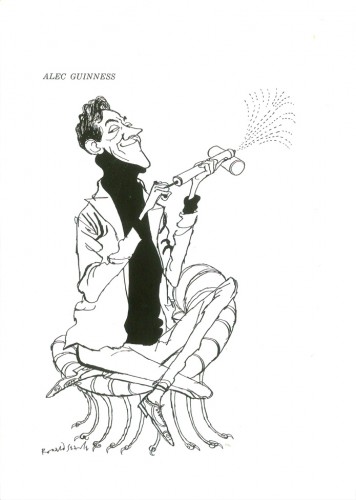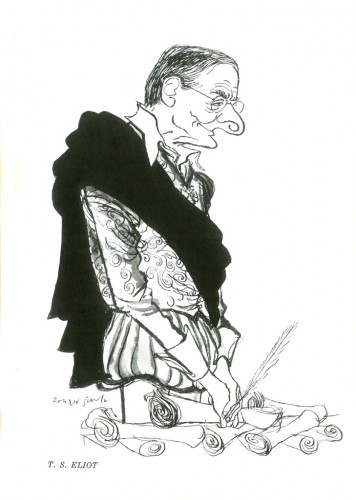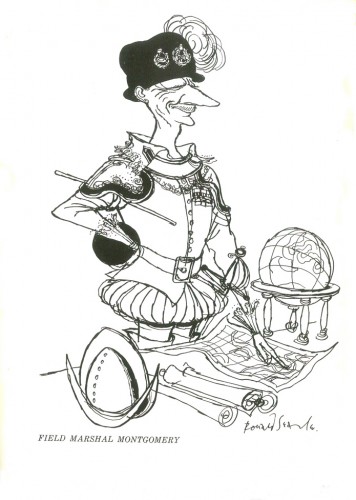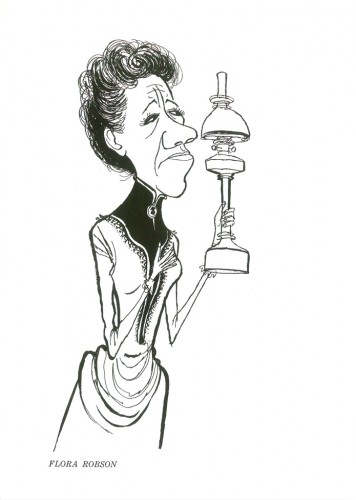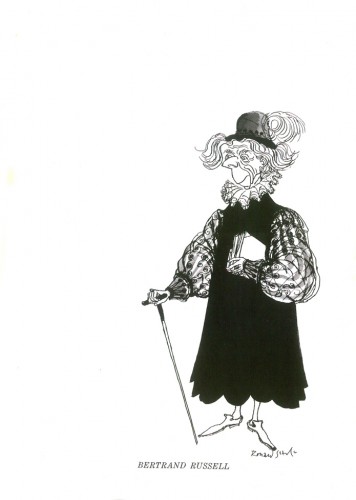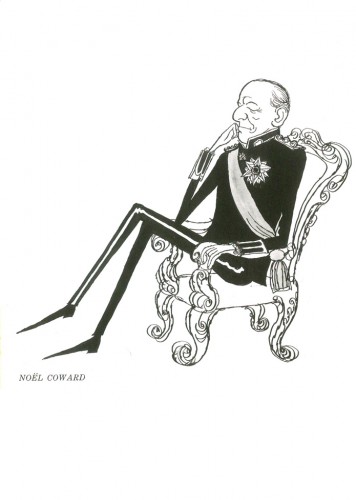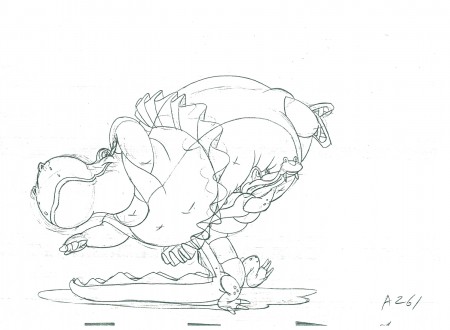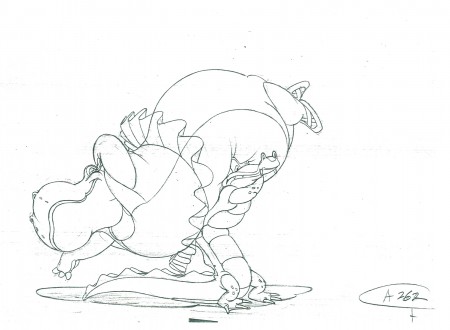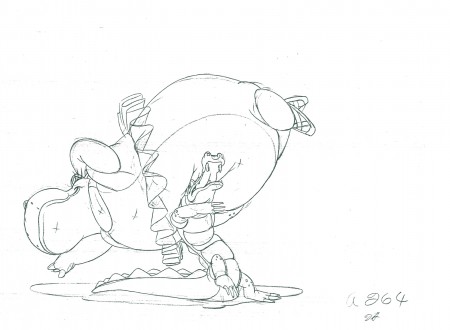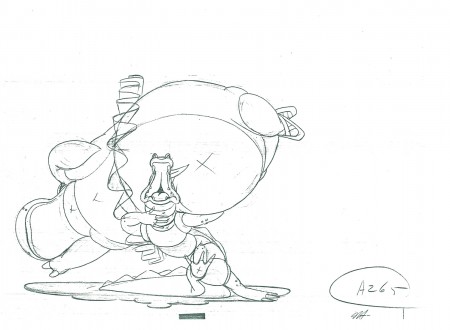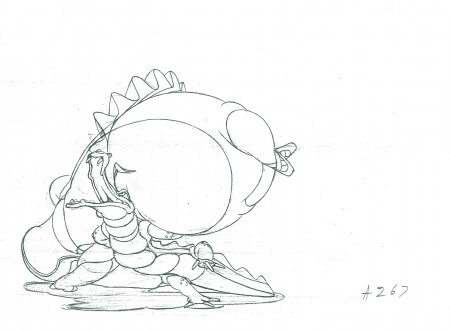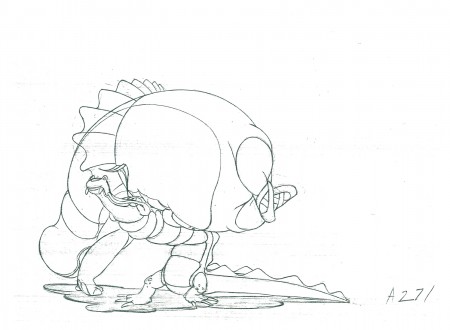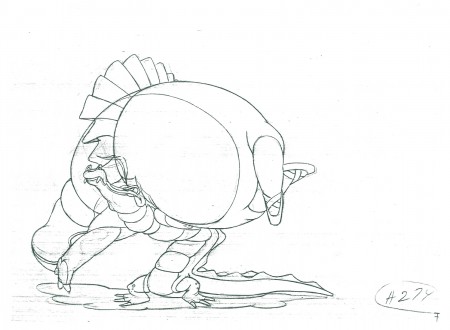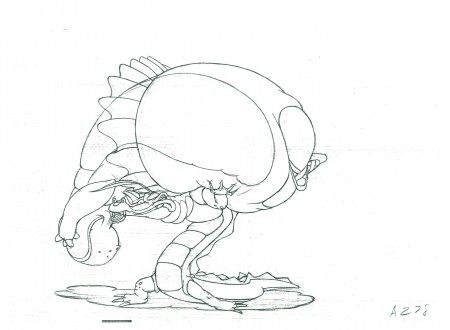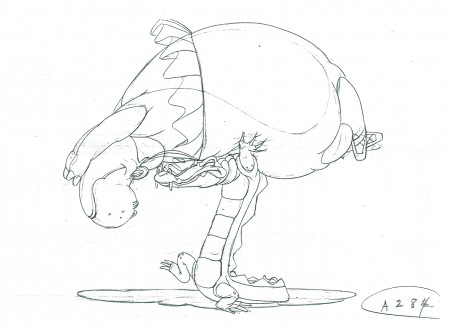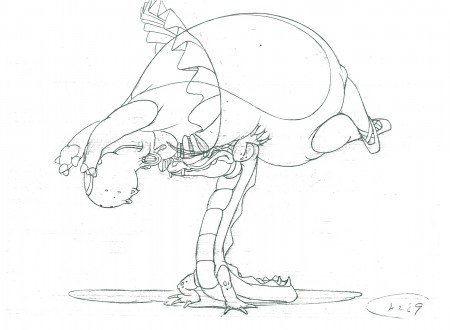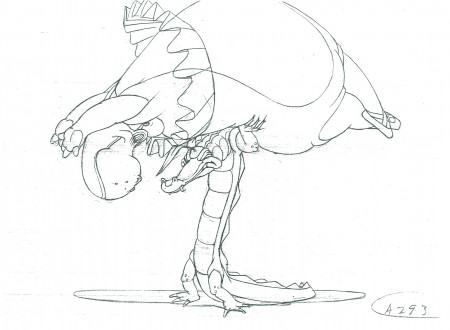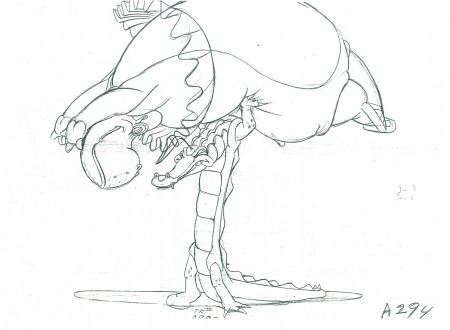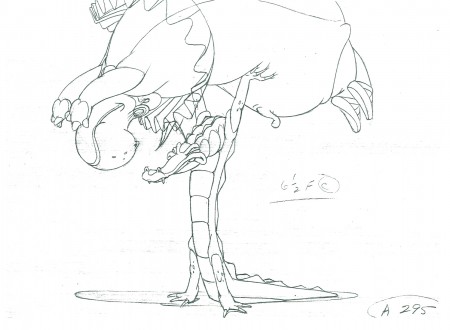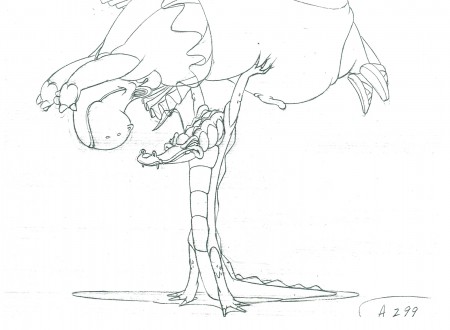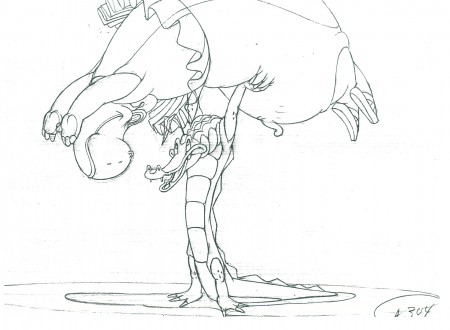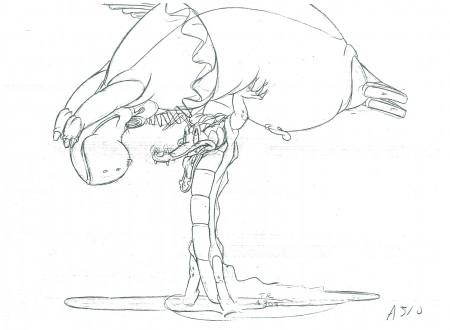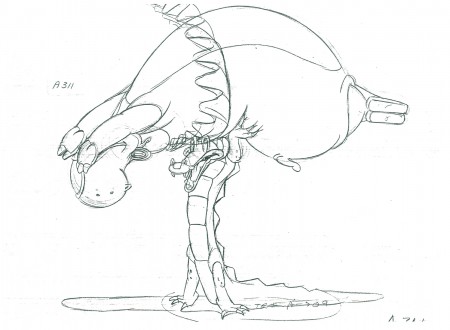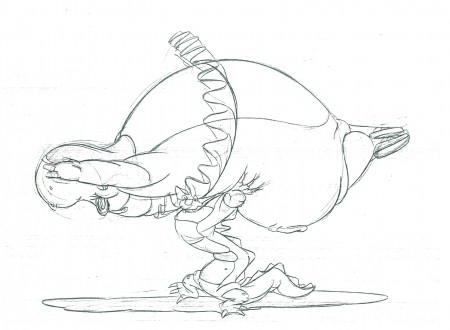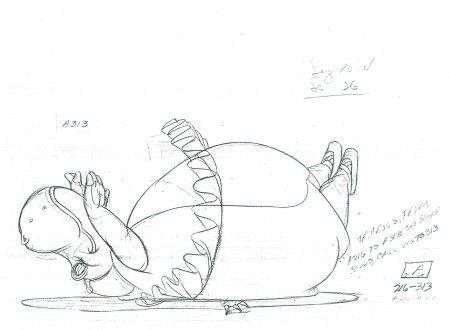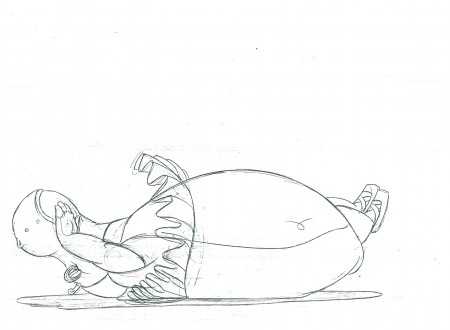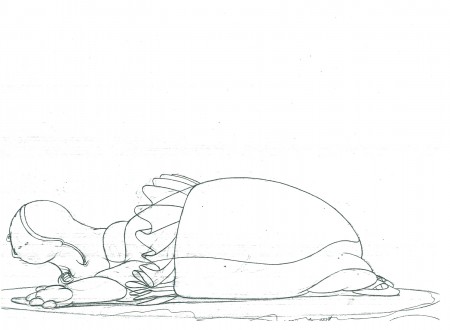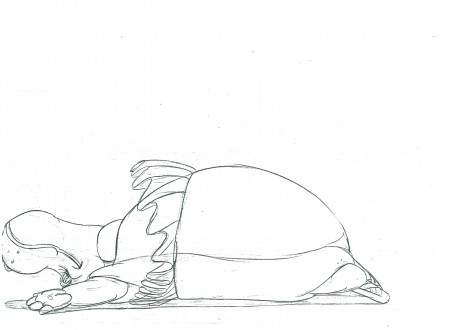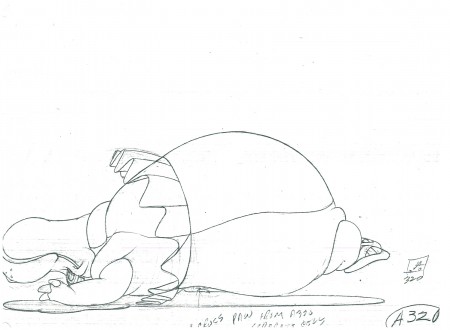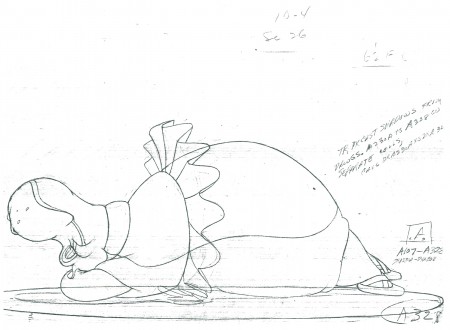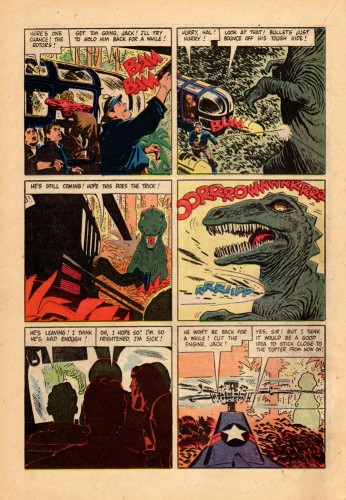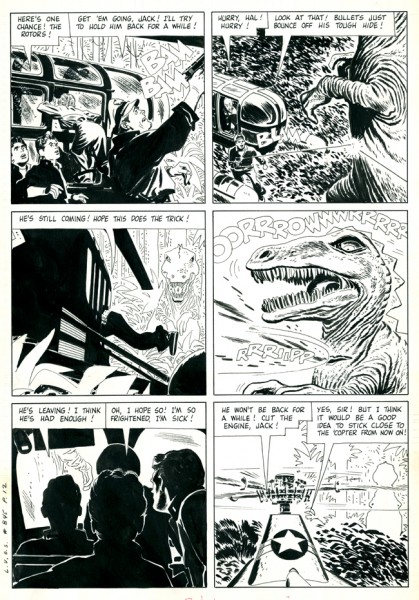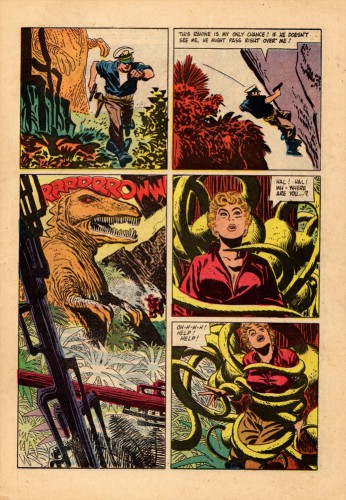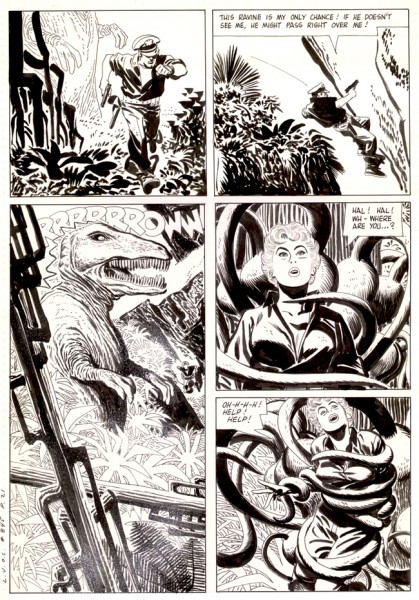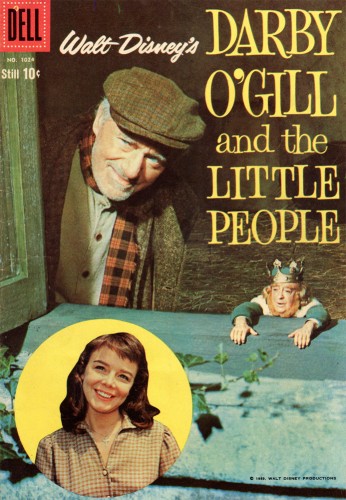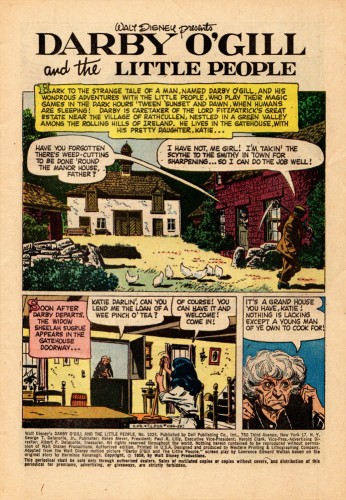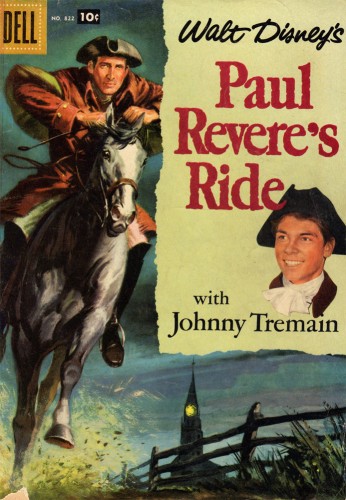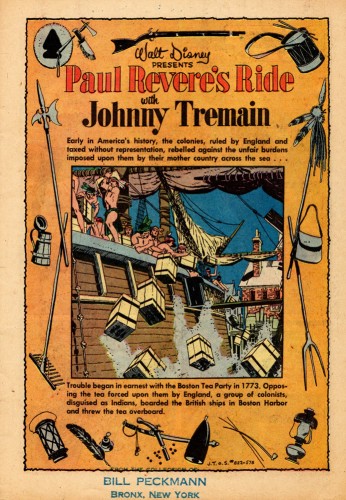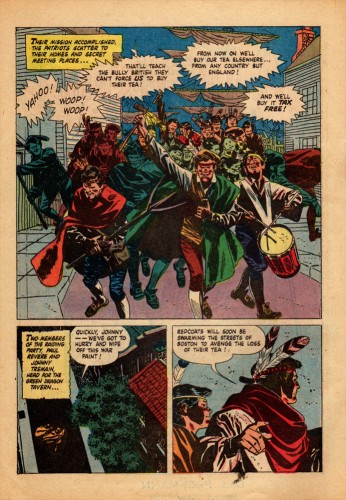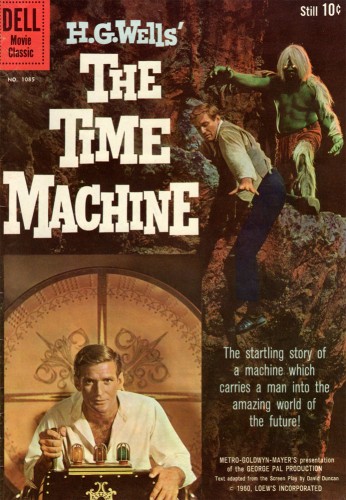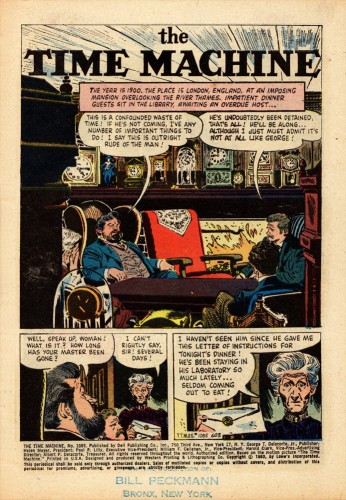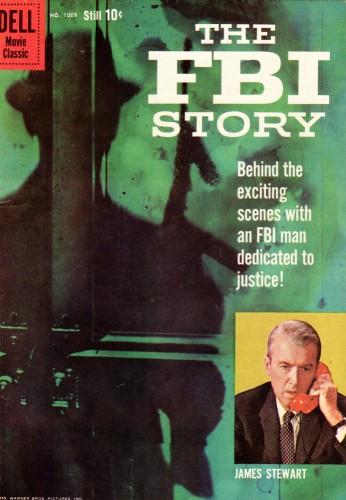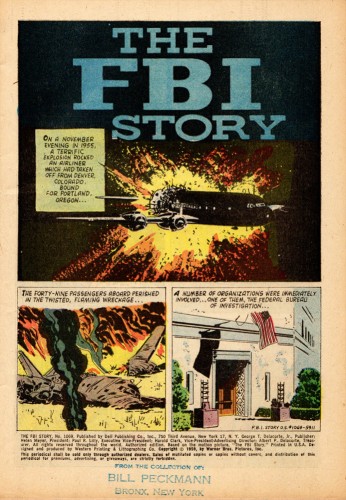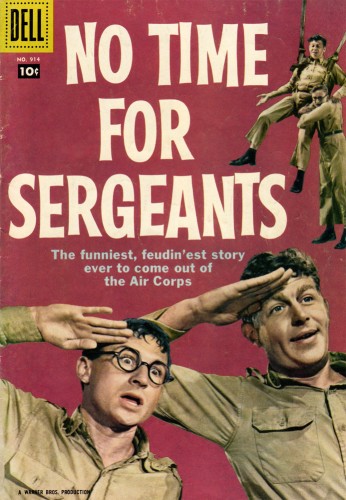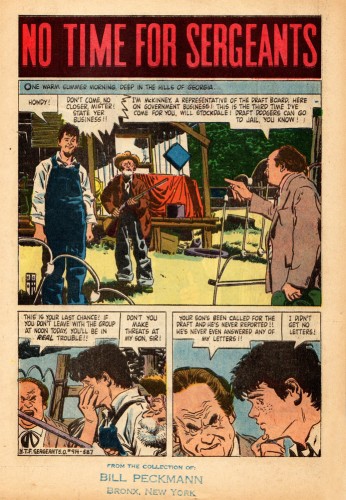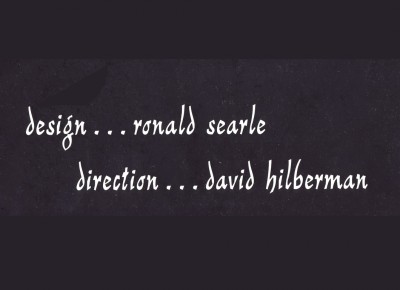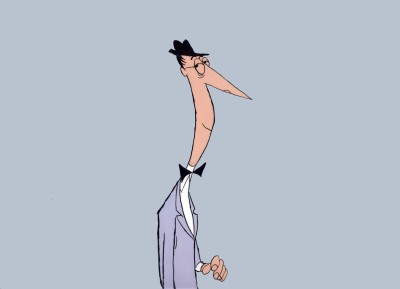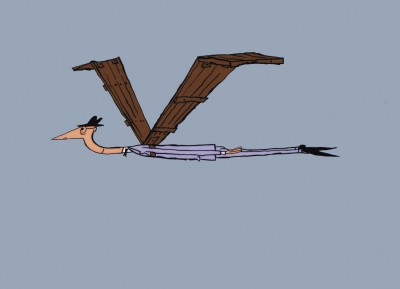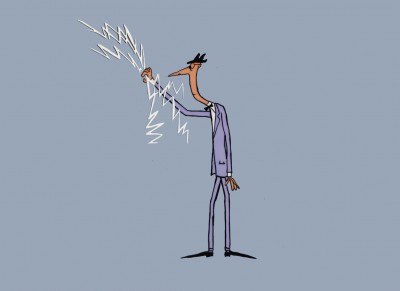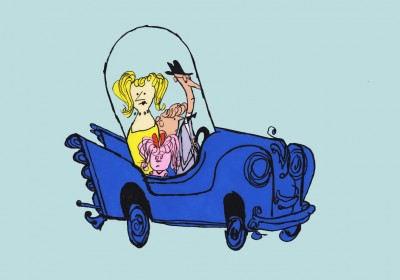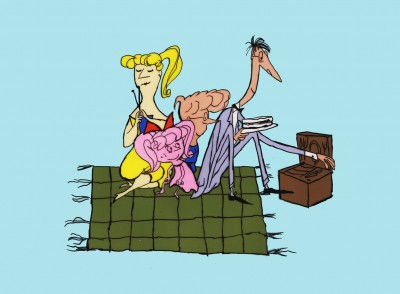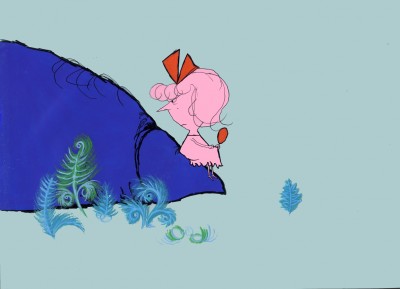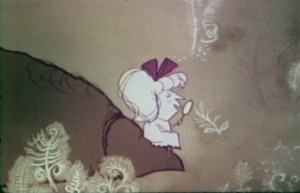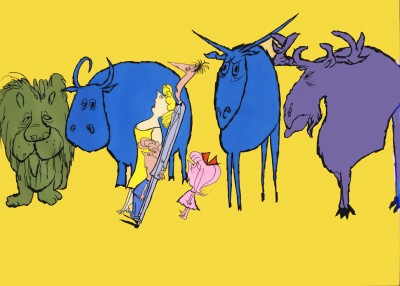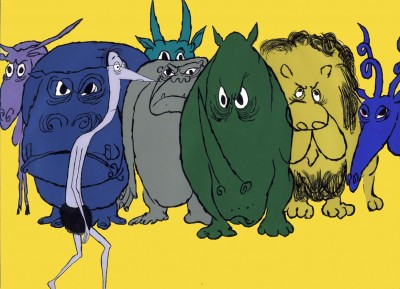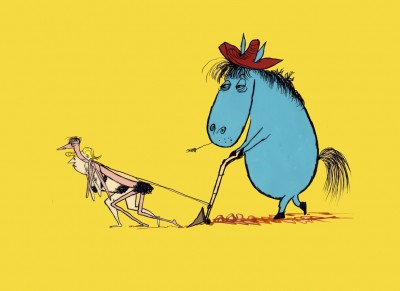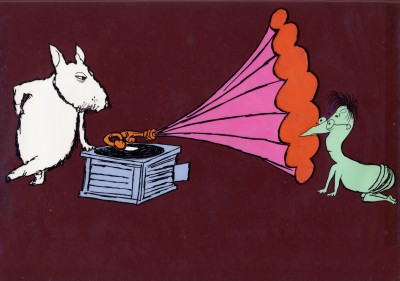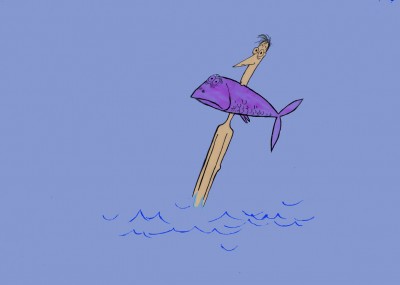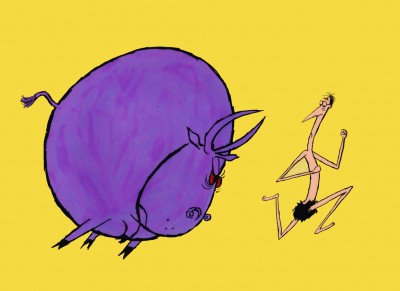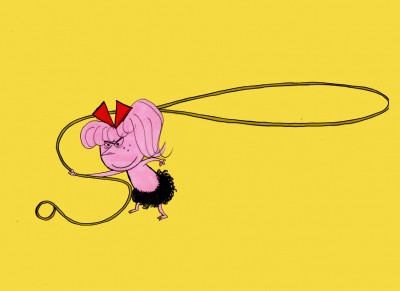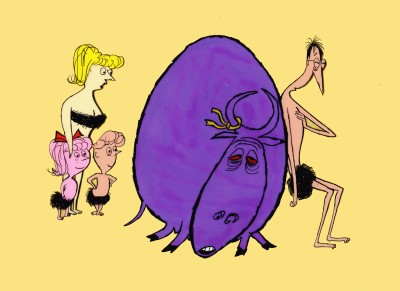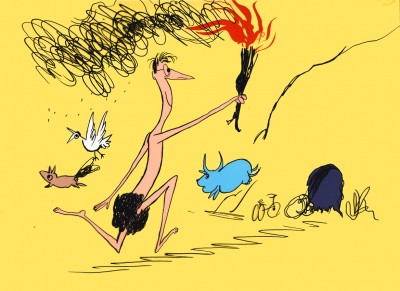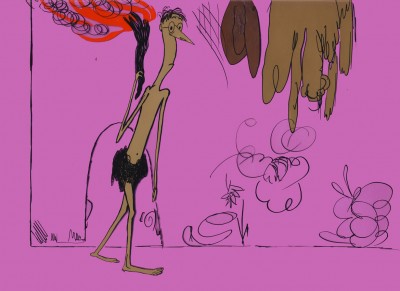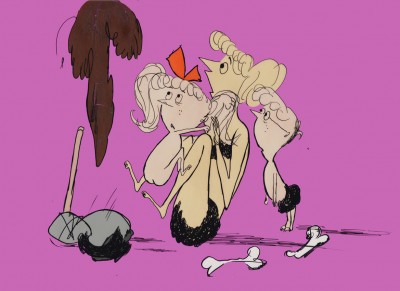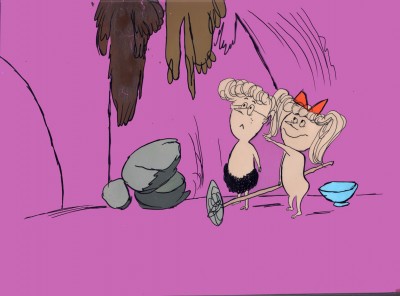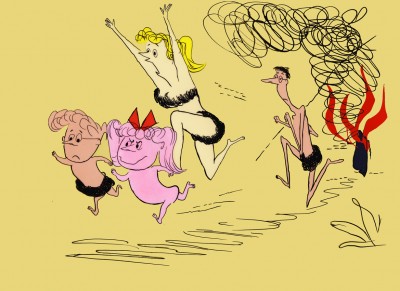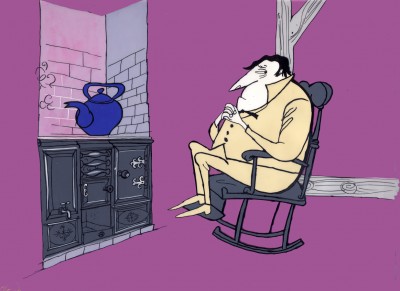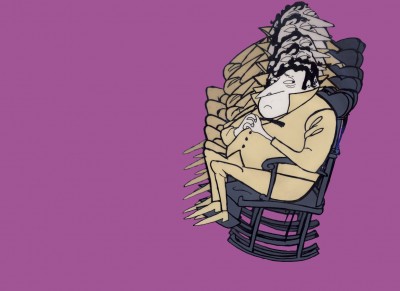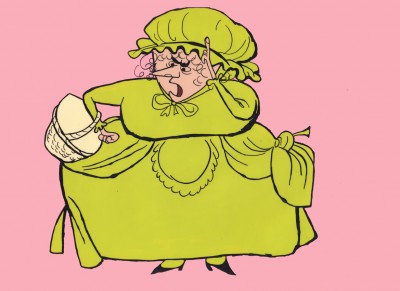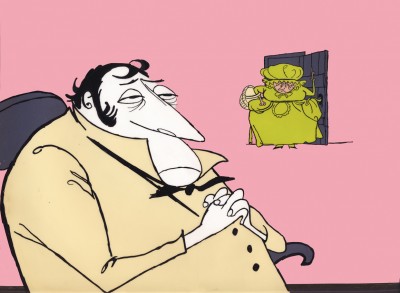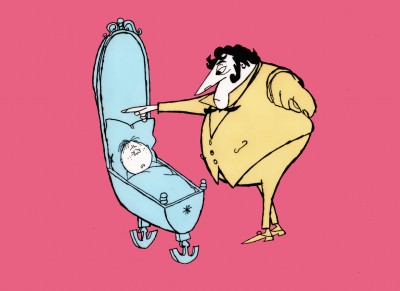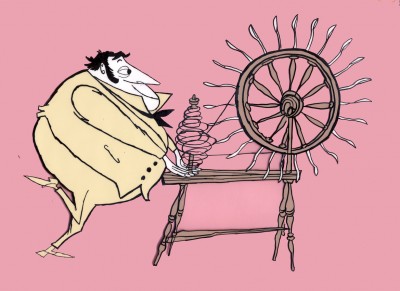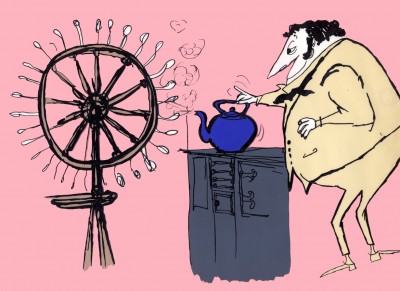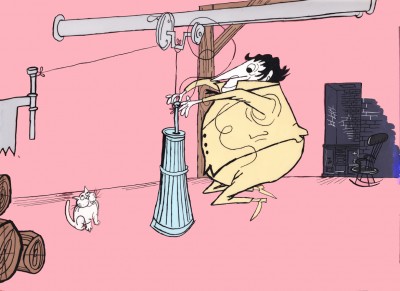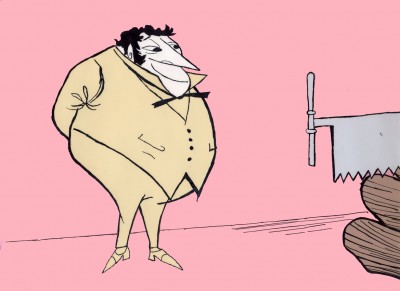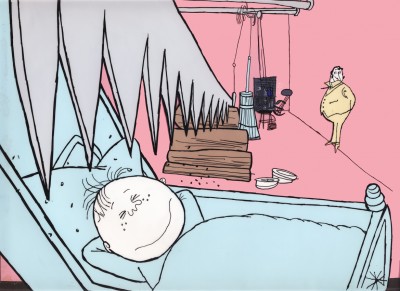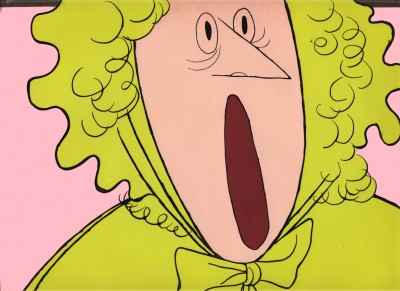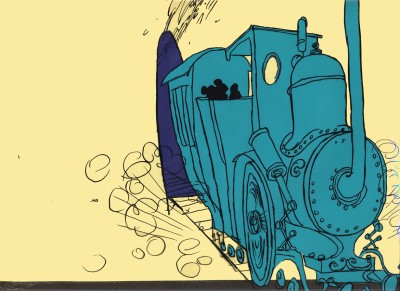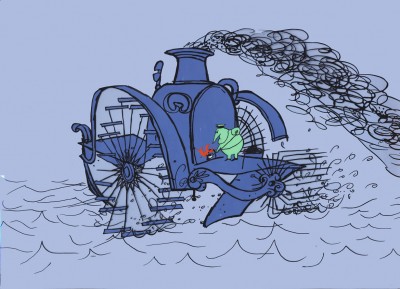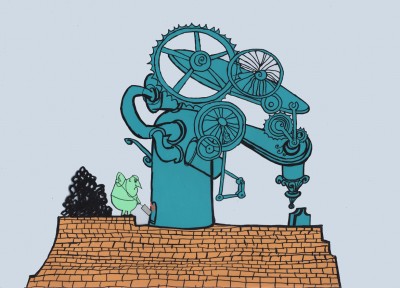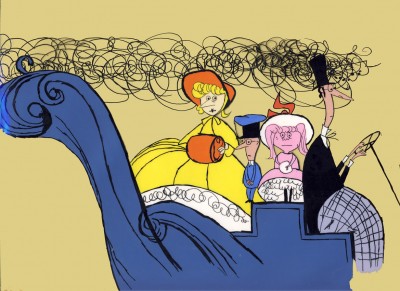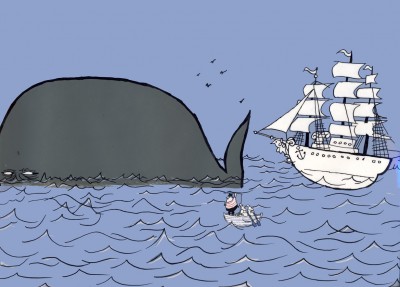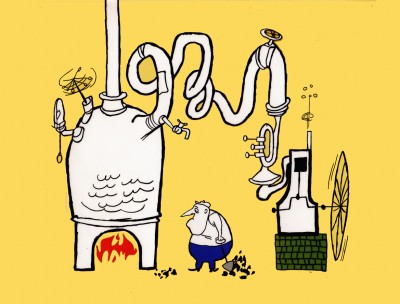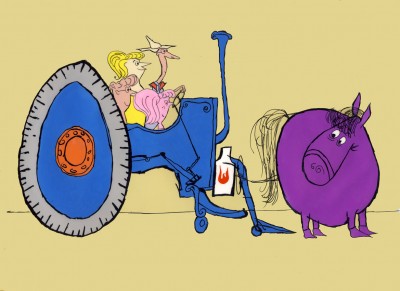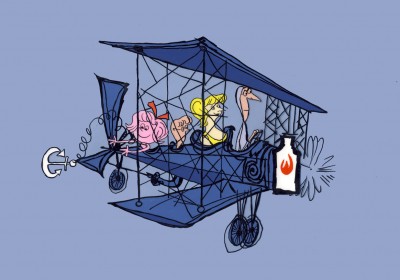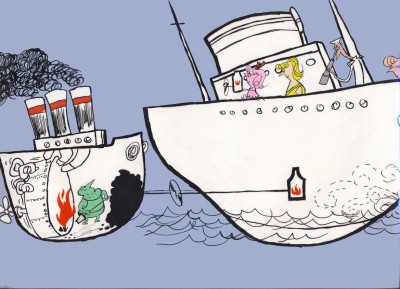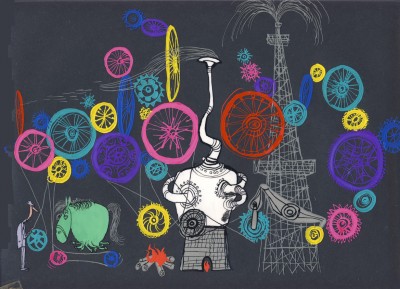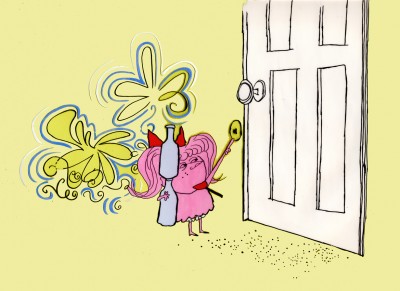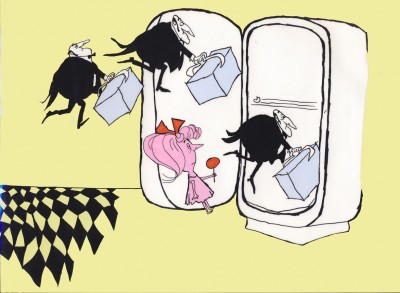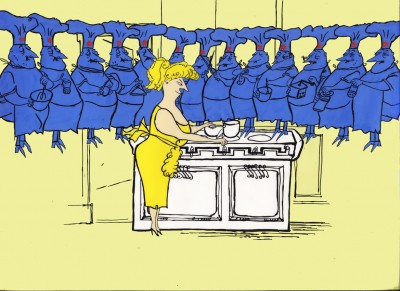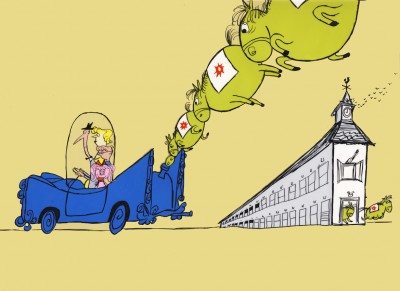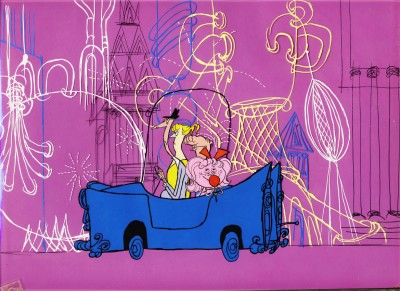Monthly ArchiveMay 2011
Animation Artifacts &Disney &Photos 11 May 2011 07:09 am
Cinderella Photos – 1
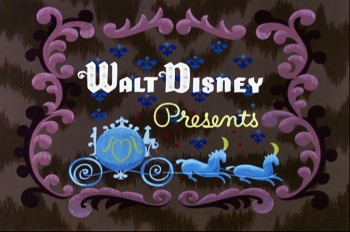 - Hans Perk sparked my interest. He recently began posting the drafts to Disney’s Cinderella on his resourceful and brilliant site, A Film LA. I’ve had a love/like relationship with Cinderella since I was a kid. It’s a strong film with some solid story work, some magnificent character animation as well as some workmanlike animation. The design goes from beautiful to ordinary and back again.
- Hans Perk sparked my interest. He recently began posting the drafts to Disney’s Cinderella on his resourceful and brilliant site, A Film LA. I’ve had a love/like relationship with Cinderella since I was a kid. It’s a strong film with some solid story work, some magnificent character animation as well as some workmanlike animation. The design goes from beautiful to ordinary and back again.
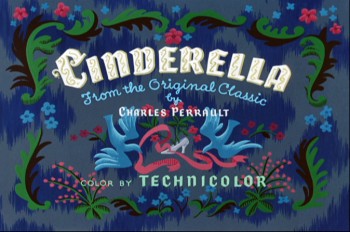 (I know, I’m a harsh critic.)
(I know, I’m a harsh critic.)
To play along with Hans’ posts, I thought of doing a series of mosaics à la Mark Mayerson, but I’m looking for something else. I haven’t quite figured that out yet, but I thought I’d post some photos to celebrate getting my hands on those wonderful drafts.
The first group of photographs comes from the live action reference that was done. This filmed material wasn’t shot for the purposes of rotoscoping, but it was shot to give animators some reference on how the characters might move. Then, if they requested it, the animators would get registered print-outs of the images.
I’m currently reading Didier Ghez‘ first book of interviews with Disney artists. Walt’s People: vol. 1 is just one of 11 books of interviews available. I suggest you get these; there’s so much information in them. (And they’re absolutely addicitive reading.) In vol. 1 Marc Davis talks about this reference foto material:
- “Since I was involved with the animation of so many humans there was generally some live-action footage to work from or some sort of footage you looked over.”
“Someone asked me just the other day, ‘Didn’t you fellows just rotoscope everything?’ and that’s a term I dislike immensely. When you just trace over film footage, everything has a tendency to become very broad. Every woman you drew would turn out looking like this Roseanne character on television. I see quite a lot of this thing on Saturday-morning cartoons where they’ve worked from live footage and it has a very traced look about it and it looks dead. Live action shows people doing things and it’s right on the nose. However, in animation, I try to stay two or three frames ahead of everything; action, then reaction. You’re talking about 24 frames per second that are going through the projector, so it’s a minute thing that you really can’t see. It’s highly synchronized.”
“Action that is difficult to do, such as a dancer, I would want to see a performer do it and then look at the film, not trace it. This is very true with my Cruella de Vil for 101 Dalmatians. We had a wonderful actress, Mary Wickes, who did some great live action. I used her suggestions and made them more so. If you looked at the footage of Mary and then the character, you would have a difficult time seeing the resemblance. It’s suggestion you need, and that’s why I dislike the term ‘rotoscope.’”
“Live action may be used as a blueprint, as a reference, but never traced. I see some of our films now and it’s easy to spot who was doing that sort of thing.”
Here are some of those Photo references:
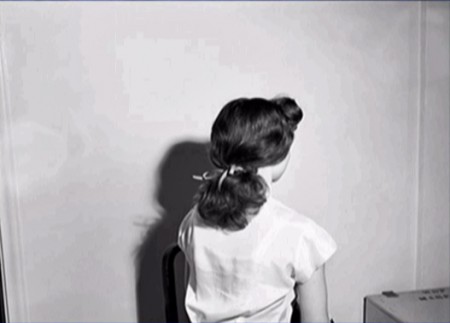 1
1Helene Stanley
Obvously these are hair references.
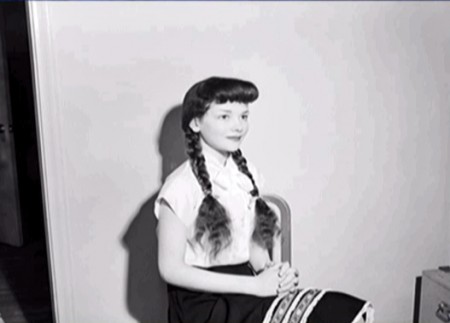 3
3
Helene Stanley
She almost doesn’t look real in this photo.
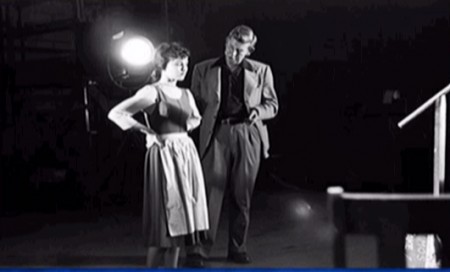 4
4
Here’s director Wilfred Jackson with Stanley.
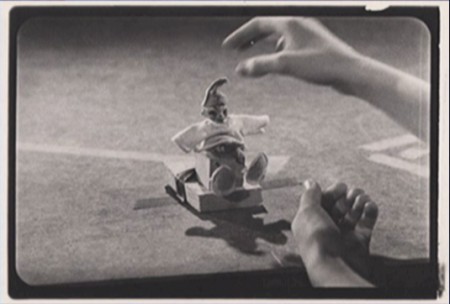 7
7
What they didn’t use a real mice to model for Gus and Jacques?
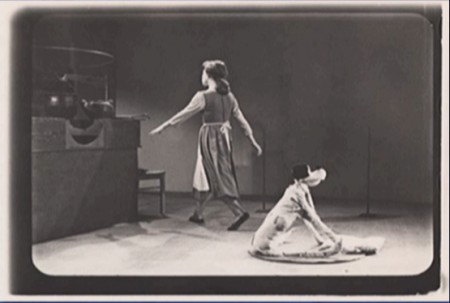 12
12
Helene Stanley with stand-in Bruno.
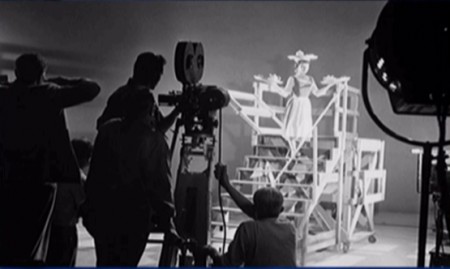 13
13
I can imagine that reference helped with this balancing sequence.
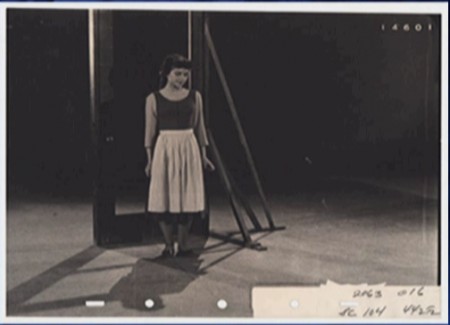 18
18
I didn’t realize they were still using the 5-hole paper this late in the ’40s.
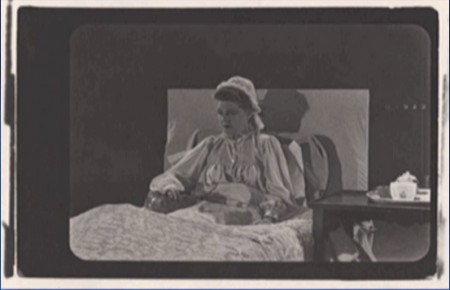 21
21
Eleanor Audley, the voice of the Step-mother,
also acted the part for this reference material.
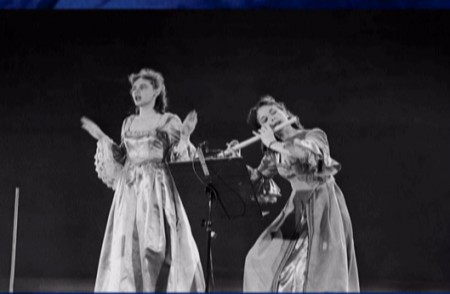 27
27
Helene Stanley also acted as “Anastasia.”
Rhoda Williams played “Drizella.”
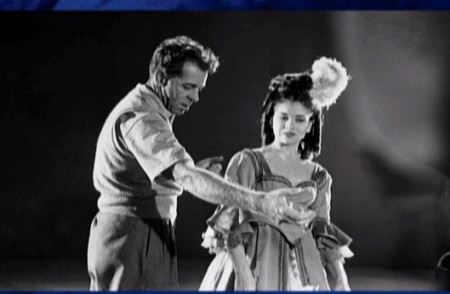 28
28
I’m not sure who’s directing the actress. If any out there
can identify him, please leave a comment.
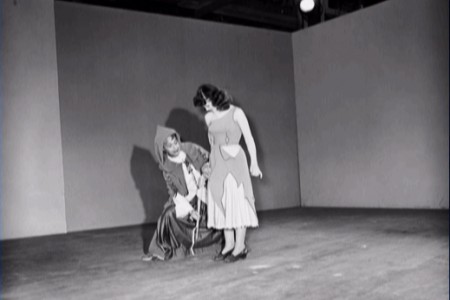 30
30
This is Ilene Woods, the voice of “Cinderella” but
Verna Felton was the voice of the Fairy Godmother;
Claire Du Brey performed the part for the reference material.
Bill Peckmann &Books &Illustration 10 May 2011 07:48 am
Ungerer SongBook
- Here’s a precious item scanned and sent to me by Bill Peckmann. It’s a song book that Tomi Ungerer illustrated. Back in the 70s, Ungerer‘s work was everywhere. As a matter of fact, I always seemed to take it for granted. Yet, everytime I came upon one of his brilliant children’s books, I would find him anew. Always the work was excellent with a depth that you rarely found except in the best of Sendak or Glaser.
This song book, published in 1975, is filled with fine illustrations by Mr. Ungerer. This is a style whose depths he plumbed in ths period with books like Strega Nonna or The Three Robbers. Unlike much of his earliest work, it seemed less cartoon and more Bruegel.
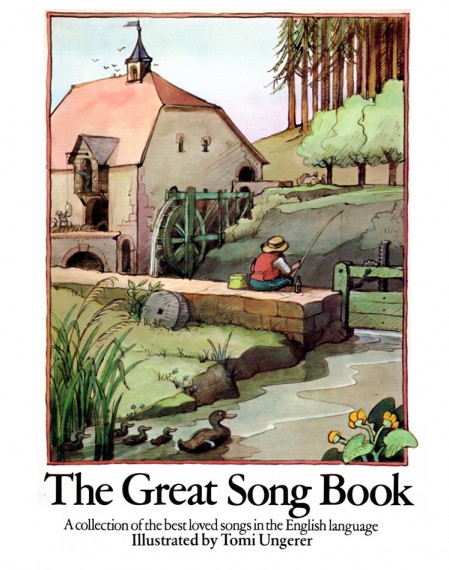
The book’s cover
Many thanks to Bill Peckmann for contributing this artwork, scans and inspiration.
Animation 09 May 2011 06:57 am
Bad Animation
- Let’s just ramble on about animation. I don’t mean animated films, I mean animation. I don’t much like watching animated films these days. I haven’t seen much that I like among recent films. All those YouTube videos and student films on Cartoon Brew. There’s so much more chaff than wheat. I get enormously impatient and dismiss films quickly. I sat through the ASIFA East animation festival award winners and got to see a number of bad films, regardless of the fact that they’d won awards. (Despite all the unknowing comments on Cartoon Brew recently, there were quite a few films among the winners. The shortage was in the Independently produced films, which is not a problem with ASIFA East’s festival but with Independent film. There were two fine films among the winners – both had problems as well – and a lot of bad films. I don’t include Student films in this discussion.)
I saw a lot of problems with these films that had won. Let’s talk about a couple of these problems without naming the films. I don’t mean to pick on ASIFA East award winners; it’s just that some bad habits showed up among some of the winners. There was lots of bad writing, but that’s not going to be my main focus. I’m concerned about the animation.
Below are the frames from John Kricfalusi‘s site of one of his favorite run cycles:
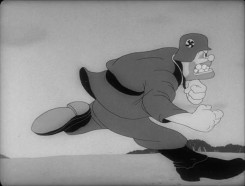 1
1 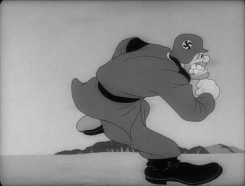 2
2
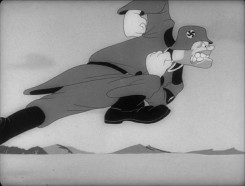 11
11 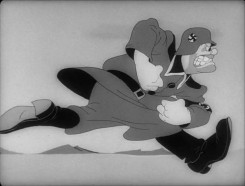 12
12
Though the original scene is and should be on ones,
I’ve exposed it on twos for the sake of my blog points.
The drawings above in a QT movie.
- I don’t think most people animating these days think of their drawings as characters – not really. How else could you explain the preponderance of half-walks? That is when you animate one leg crossing in front of the other, and you keep repeating this instead of then animating the back leg crossing. You’re doing half the number of drawings, but you’re showing your lack of interest in a character, rather than a graphic motion. This isn’t limited animation, it’s bad animation! It’s surprising that even in the silent days of animation, they didn’t take this crappy short cut. They didn’t really know what character animation was, back then, yet they had more concern for the characters than do the “animators” of today. It’s pathetic. Yet, I can count three times, in three different films, noticing this lousy stunt among the award winners. And you see it in so many of the new on-line films.
as it would be animated by today’s animator.
Students: ANIMATE BOTH LEGS! “Professionals,” you should be ashamed of yourselves.
- I’ve also noticed that there are a lot of films that are animated on fours. It’s not just that the animation is on fours (and believe me when I say that I can see every one of the frames on fours!), it’s that the animators don’t make the choice. They work in flash or some other program where they choose to animate solely on fours. This means they can’t go to threes, twos or, heaven forbid, ones when they have to. It also means they don’t properly know how to animate. Since all animation is about TIMING, and since you choose not to properly time your motions, you’ve given up the most important attribute in animation. It’s not good, and it’s a real disservice to your own learning abilities. You’ve chosen to stunt your growth.
There were many films done this way. One of them also included a lot of camera moves – also on fours. It was like a staccato zoom in or out. I felt like I was jumping in and out in stages and wanted to run out of the theater – or at least stop watching these award winners.
exposed on fours.
There was a Disney Action Analysis class where they discussed when things should be on ones, twos, threes or fours. The decision was, originally made, that animation should be NEVER exposed on fours. That is until it was shown that very slow moving animation, animation that required MANY drawings – when lines touched lines – could get away with fours. Of course, this has to do with full animation, and the limited type of animation done today can find many uses for fours, but there has to be a choice to go in and out of that choice. Limiting yourself to ONLY animating on fours means you choose to handicap your animation, and you’re not really developing character. You can’t be.
You’re, again, animating a graphic symbol not a living thing.
- Then there were the films that treated the characters with complete hostility by pulling insufferably nasty and inhuman stunts on the characters. This IS a fault of the writing and the directing more than the animation. I do have a complaint about scripts. Why do I, as an audience member, have to sit through these terrible actions and business on the screen? This was the case with at least three of the films. The younger generation seems to delight in rotten behaviour to their “characters” indicating more of a psychological problem in the filmmaker than a choice in service of the film. Believe me this wasn’t the case ten years ago. Terribe things might happen to Daffy or Elmer, but they weren’t as vile and in your face as they are today.
One film showed a lot of promise as far as the animation – the movement – was concerned, but the principal character lived through some horrible torture. And then the happy ending had big, bright, bubbly and cute Disneyesque drawing that was equally repugnant. The film was just so easy to dismiss – yet the animation, itself, moved fairly well and showed real knowledge on the part of the animator/director/writer. The film was tedious to sit through.
This is what we have today. Violence is the last bastion of the young filmmaker. Viva la freedom! Too bad it makes for horrible filmmaking! Impossible to sit through.
Unfortunately, I can’t make an example of this from the drawings John K posted above. Also unfortunately, the violence in his films has unwittingly helped to lead to this direction, albeit the cartoon violence in his films IS character driven and works. In the best spirit of Clampett or Avery. The superviolent activity in these newer films is just repulsive and has nothing to do with character. It isn’t necessarily John K’s fault, it’s just the way it is. We all affect each other, and that’s the society we have nowadays. Too bad.
Commentary &Photos 08 May 2011 08:05 am
Creepers – PhotoSundayRecap
For today’s PhotoSunday, I’m recapping something posted back in July of 2008. This is one of many I did back then in which I took some pride. I’ll have to get back to photographing my streets of NY. Now that the weather is warming up a bit, I’ve every encouragement to do so.
- There was an excellent documentary on PBS this past Thursday. It was called, “Home.” Perhaps it was just local channel 13/WNET that aired it. The show was a documentary about New York from the vantage point of outsiders who’d moved here. The director, Alan Cooke, interviewed lots of celebrity types; Frank McCourt, Liam Neeson, Alfred Molina, Rosie Perez, Mike Myers, Colin Quinn, Susan Sarandon and Woody Allen offered choice comments throughout the show.
Malachy McCourt, at one point, said that the City was cold and difficult. Even the sidewalks were cold, hard concrete. Yet in these sidewalks there were always cracks with bits of life shooting up from the least likely places.
Wall-E offers a world of no vegetation, and we have to accept that premise. Yet, reality shows us that nothing can cede the bits of green from stopping in the coldest of extreme. George Carlin once said that styrofoam was not going to destroy life on earth. It was just going to stop HUMAN life on earth. He speculated that perhaps humans were put here specifically to invent styrofoam so that the earth could continue after all humans died off using styrofoam for whatever it needed. Even the devestated Hiroshima and Nagasaki have already recovered from the nuclear onslaught some sixty years ago. Grass grows there.
Here are bits of grass, life and plants creeping out from the least likely places.
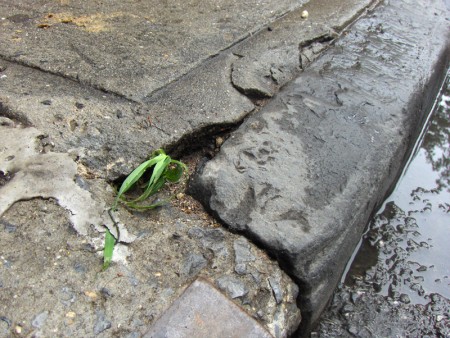
(Click any image to enlarge.)______________
To me, it’s more likely that 700 years after the humans left earth,
the planet would have looked more like the photos below.
Commentary &Puppet Animation 07 May 2011 07:01 am
Left Overs
- There should be plenty of 3D stop-motion films circling the globe ni a year or two. Recently there’s been a bit of news about a few of these animated features.
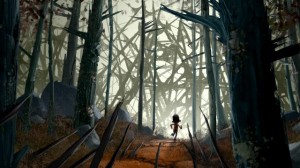 LAIKA, the company that produced Coraline, under the sturdy direction of Henry Selick, has announced a new two picture deal with Focus Features. Their first film, ParaNorman, will be released on August 17th, 2012. The second, yet-to-be-named, picture will be released nationwide in 2014. The first film is being directed by Sam Fell and Chris Butler, from his own original screenplay. Sam Fell was director of The Tale of Despereaux and Flushed Away. Chris Butler was storyboard supervisor on Coraline and storyboard artist on Tim Burton’s Corpse Bride. The voice cast includes Academy Award nominee Casey Affleck (The Assassination of Jesse James by the Coward Robert Ford), Tempestt Bledsoe (The Cosby Show), Jeff Garlin (Curb Your Enthusiasm), John Goodman (Monsters, Inc.), Anna Kendrick (Up in the Air), Leslie Mann (The 40-Year-Old Virgiin), and Tony and Emmy Award winner Elaine Stritch (30 Rock).
LAIKA, the company that produced Coraline, under the sturdy direction of Henry Selick, has announced a new two picture deal with Focus Features. Their first film, ParaNorman, will be released on August 17th, 2012. The second, yet-to-be-named, picture will be released nationwide in 2014. The first film is being directed by Sam Fell and Chris Butler, from his own original screenplay. Sam Fell was director of The Tale of Despereaux and Flushed Away. Chris Butler was storyboard supervisor on Coraline and storyboard artist on Tim Burton’s Corpse Bride. The voice cast includes Academy Award nominee Casey Affleck (The Assassination of Jesse James by the Coward Robert Ford), Tempestt Bledsoe (The Cosby Show), Jeff Garlin (Curb Your Enthusiasm), John Goodman (Monsters, Inc.), Anna Kendrick (Up in the Air), Leslie Mann (The 40-Year-Old Virgiin), and Tony and Emmy Award winner Elaine Stritch (30 Rock).
Meanwhile . . .
Aardman animation is producing two features in conjunction with Sony Pictures Animation. Arthur Christmas, is a 3D adventure that will hit theaters on November 23, 2011. The voice cast includes: James McAvoy, Hugh Laurie, Jim Broadbent, Bill Nighy, Imelda Staunton, and Ashley Jensen, which is currently in production. The film is being directed by Sarah Smith from a screenplay written by herself and Peter Baynham.
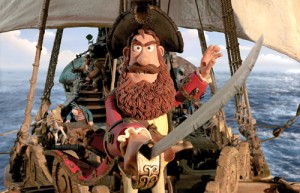 The second feature, The Pirates! In An Adventure with Scientists will be directed by Peter Lord and co-directed by Jeff Newitt. The screenplay is by Gideon Defoe, based upon his books. The vocal cast will include: Hugh Grant, David Tennant, Imelda Staunton, Jeremy Piven, Salma Hayek, Brian Blessed, and Brendan Gleeson.
The second feature, The Pirates! In An Adventure with Scientists will be directed by Peter Lord and co-directed by Jeff Newitt. The screenplay is by Gideon Defoe, based upon his books. The vocal cast will include: Hugh Grant, David Tennant, Imelda Staunton, Jeremy Piven, Salma Hayek, Brian Blessed, and Brendan Gleeson.
And . . .
Henry Selick has recently signed to direct features for Disney/Pixar. He’ll be working out of Pixar’s Emeryville, Calif. campus and using their resources. The films he will make will be written and directed by him based on both original ideas and literary properties. This brings Selick back to many of the classmates with whom he graduated from CalArts.
- Last week the ASIFA East Festival was held and awards were presented to the chosen filmmakers. Cartoon Brew posted a note about the winners and included a snarky comment by Amid Amidi which takes a swipe at the board members for entering their films in this local festival. And I do mean local festival. Here’s Amid’s comment:
- ASIFA-East president David Levy also won two of the top awards: Best Educational Film and 1st Place for Independent Film. He’s a nice guy so let’s all look the other way and pretend that’s not a conflict of interest…
 The quality of the film is irrelevant. Doesn’t matter if it’s the best animated short since One Froggy Evening. If the ASIFA-East leadership or board is competing against its members, that’s a serious issue that affects the legitimacy of the awards.
The quality of the film is irrelevant. Doesn’t matter if it’s the best animated short since One Froggy Evening. If the ASIFA-East leadership or board is competing against its members, that’s a serious issue that affects the legitimacy of the awards.
Here’s a response from Adrian Urquidez:
- ASIFA-East board members have always been allowed to participate in the festival and always will because the volunteer board is comprised of active members in the animation community both in their professional and personal lives. In no way are any of the awards just “given to people in their circleâ€, they are voted on by the hundreds of members who participate in the well-publicized jury screenings. We’ve had 42 years of successful festivals, and while always looking to improve, I believe we have a lot to be proud of
If one wants to have a discussion on outreach, fine. But unnecessary slander gets you nowhere.
-Adrian Urquidez ASIFA-East website manager, board member and (horror of horrors) grateful award winner.
The way ASIFA East works is this. Filmmakers are asked to submit films; board members are not discouraged. There are several nights of viewing for any member who wants to attend. Those who attend are the voters for any awards.
Just as the Oscar voters are tied to some of those entering the awards and vote for their friends, those who attend the ASIFA screenings are probably friends of some of the filmmakers and will most likely vote for their friends. This is human nature, not corruption.
This doesn’t mean that it’s a small coterie of friends who always win the awards. However, when only a small number of films are entered, the quality will be lower than usual. If board members (all 9 of them) weren’t allowed to enter their films, there would be fewer board members since they do a lot of work for no pay, and if they weren’t allowed to enter the films in the festival there would be a reason for them not to volunteer to be on the board and do all the hard, necessary work.
This is very different from the awards given out of ASIFA Hollywood. ASIFA East is a small group in New York and should be reccognized as such. When The Lipsett Diaries won the award as the Best Canadian Film at the Ottawa Animation Festival, was that suspect? Somehow I, personally, didn’t see it that way. I did see a good film win a well-deserved award. Just as I saw David Levy’s film win a deserved award.
In the past 40 years or so of ASIFA East’s festivals, I can assure you I’ve won quite a few awards, despite the fact that I’ve been a board member. Certainly all my licking of stamps for the ASIFA mailers wasn’t enough to make my films succcessful with all the voters who didn’t know me. My films won the awards, and I was pleased to be able to share them with the audience – that’s truly the prize you get. (When you win a prize, your film is usually screened in the large New School auditorium.) The awards – a piece of paper – are worthless. Hearing a large audience (about 1000) makes the win worth while and something to remember.
Bill Peckmann &Comic Art &Illustration 06 May 2011 06:54 am
EC Comics Convention
- The following piece was sent to me by Bill Peckmann. Here’s his introduction to it:
- Here’s something that might not be accessible to some of your readers.
It’s the program booklet of the 1972 EC Comics Convention that was held in NYC.
I’ve scanned the pages pertaining to cartoonists of the early MAD comic book. The caricatures were done in the early ’50′s (EC at it’s peak) by a very young Marie Severin. (EC colorist then, went on to fame at MARVEL comics later.). The comments of the cartoonists are made by their compatriots for the Convention. Twenty years had passed but the good memories were still there.
So here we have editor/artist Harvey Kurtzman. Artists – Jack Davis, Bill Elder, Wally Wood, John Severin, colorist Marie Severin (sister of John) and last but not least, publisher of EC Comics, Bill Gaines.
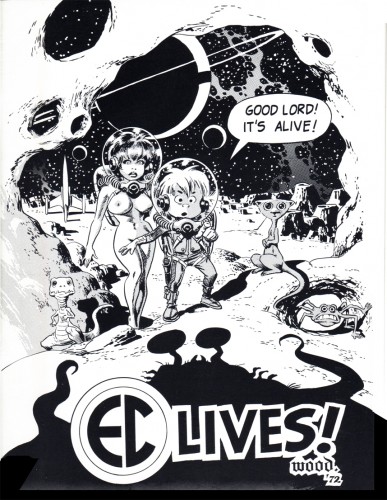 1
1
Many thanks to Bill Peckmann for sharing the material,
Books &Illustration 05 May 2011 06:41 am
Searle’s Female Approach
- One of the gems I received for my birthday, a week or so ago, was a beautiful and rare book of Ronald Searle’s cartoons, The Female Approach – which includes the original St. Trinian’s books. This little gem came from John Canemaker. I’d thought I’d post two small chapters from the book. One a group of Caricatures, the second a piece called How To Cure A Cold.
Here are those cartoons:
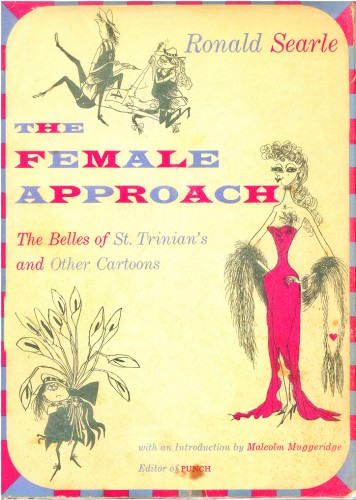
The book’s dust cover
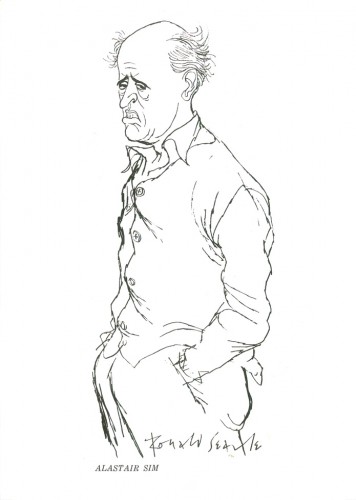 13
13
Ths caricature of Alastair Sim, alone, is worth the price of admission.
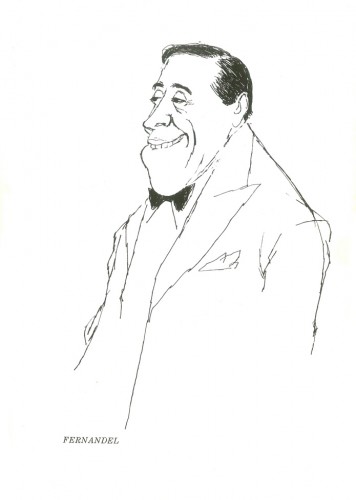 18
18
A magnificent cartoon of Fernandel. So simple and perfect.
Animation &Animation Artifacts &Disney 04 May 2011 07:48 am
Hicks’ Hippo – Part 2
- Here are the remainder of the drawings from Hicks Lokey‘s Seq 10.4 Scene 26 from Fantasia. It represents the meeting between alligator and hippo from the Dance of the Hours section of the film. Jim Will did the effects animation in the scene.
Steven Hartley is posting a mosaic of this film on his blog, Blabbing On Arts and Culture!
As usual, I start Part 2 with the last drawing posted last week in Part 1:
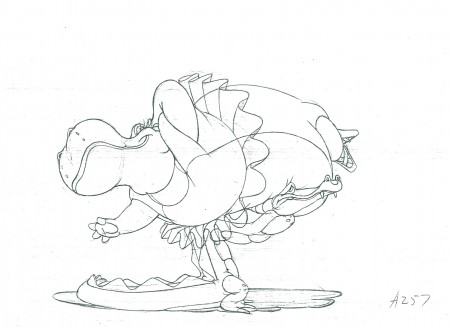 257
________________________
257
________________________.
The following is a QT of the entire scene with all the drawings (Parts 1 & 2) included.
Bill Peckmann &Books &Comic Art &Illustration 03 May 2011 03:08 am
Toth’s Land Unknown
- In celebration of the new book about Alex Toth, Genius Isolated by Dean Mullaney and Bruce Canwell, we’re posting some Toth work for Dell comics in the 60s.
Bill Peckman has an enormous collection of comics by Toth, and with the help of Dean Mullaney, we’d like to show how beautiful Alex Toth’s originals look in comparison with the poor quality printing of the comics. You can see how degraded the lines become in the final magazines when placing them alongside the original art.
Here are three comparisons to make from the comic, The Land Unknown.
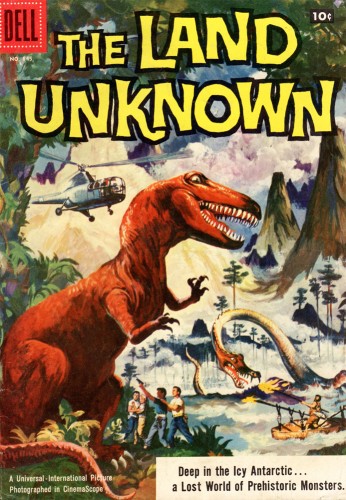
This is the published cover.
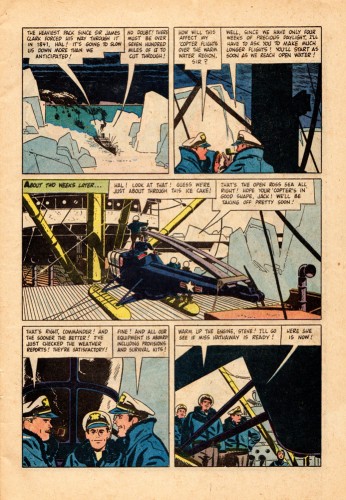 1a
1a
Look at the soft lines printed on the poor quality newsprint.
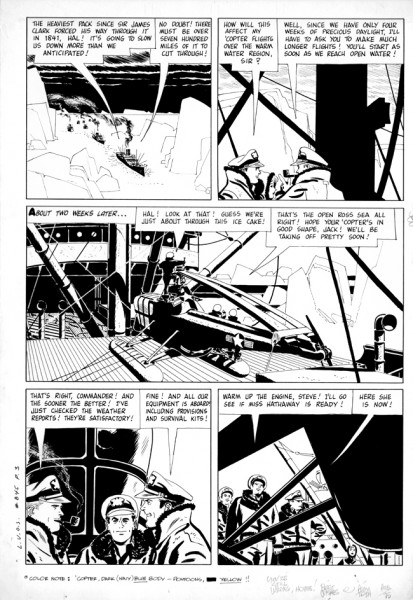 1b
1b
This is the original from Alex Toth.
Here are a sampling of other magazines done by Alex Toth.
Alex Toth also did a lot of TV titles such as: 77 Sunset Strip, Sugerfoot, The Real McCoys’, Danny Thomas, The Lennon Sisters… to name a few.
Probably his best remembered title is Zorro from the Disney TV series. This was reprinted not too long ago – the first collaboration between Alex Toth and Dean Mullaney.
Animation Artifacts &Independent Animation &UPA 02 May 2011 07:40 am
Hilberman’s Energetically Yours
- Energetically Yours was a film produced for the Standard Oil Company and directed by UPA co-founder Dave Hilberman. Animation production was supervised at both Playhouse Pictures (suprvised by Bill Melendez) and Quartet Films (supervised by Art Babbitt).
The film was designed by Ronald Searle and is, as expected, quite creative. Unfortunately, the copies of the film floating about today are all color deteriorated – everything has turned to a muddy reddish hue. In fact, the artwork for the film was very colorful. Matt Jones’
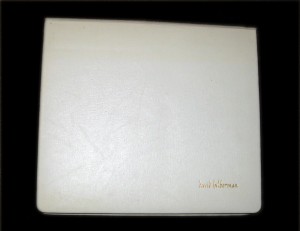 blog Perpetua (a tribute blog to Ronald Searle) has an excellent piece about Searle and this film. It includes numerous still photos of Searle and Hilberman and gives an idea of the full production.
blog Perpetua (a tribute blog to Ronald Searle) has an excellent piece about Searle and this film. It includes numerous still photos of Searle and Hilberman and gives an idea of the full production.
I’d recently been contacted by David Hilberman’s son, Dan Hilberman. He had a collection of about 50 cells from the film that had been preserved by Mary Cain in a scrapbook. She’s backed each cell with a flat colored piece of paper. _______________Mary Cain’s scrapbook
Dan has sent me scans of these cells, and
I’m going to post them here.
I did some slight adjustments in photoshop. The BG colors often had some cel flash on them or reflections. Some parts of the BG papers also had color deterioration. I replaced all with a flat color and in a couple of cases made a tighter composition. My whole purpose was to focus in on the cel colors. (I made no adjustments to any of the characters or outlines.)
I’d urge you to take a quick look at the cells, read Matt Jones’ blog and watch the pinkish film on YouTube. Then return to see what the colors actually looked like.
 1
1
Many thanks to Mary Cain for preserving these cells, and to Dan Hilberman for sharing them.
